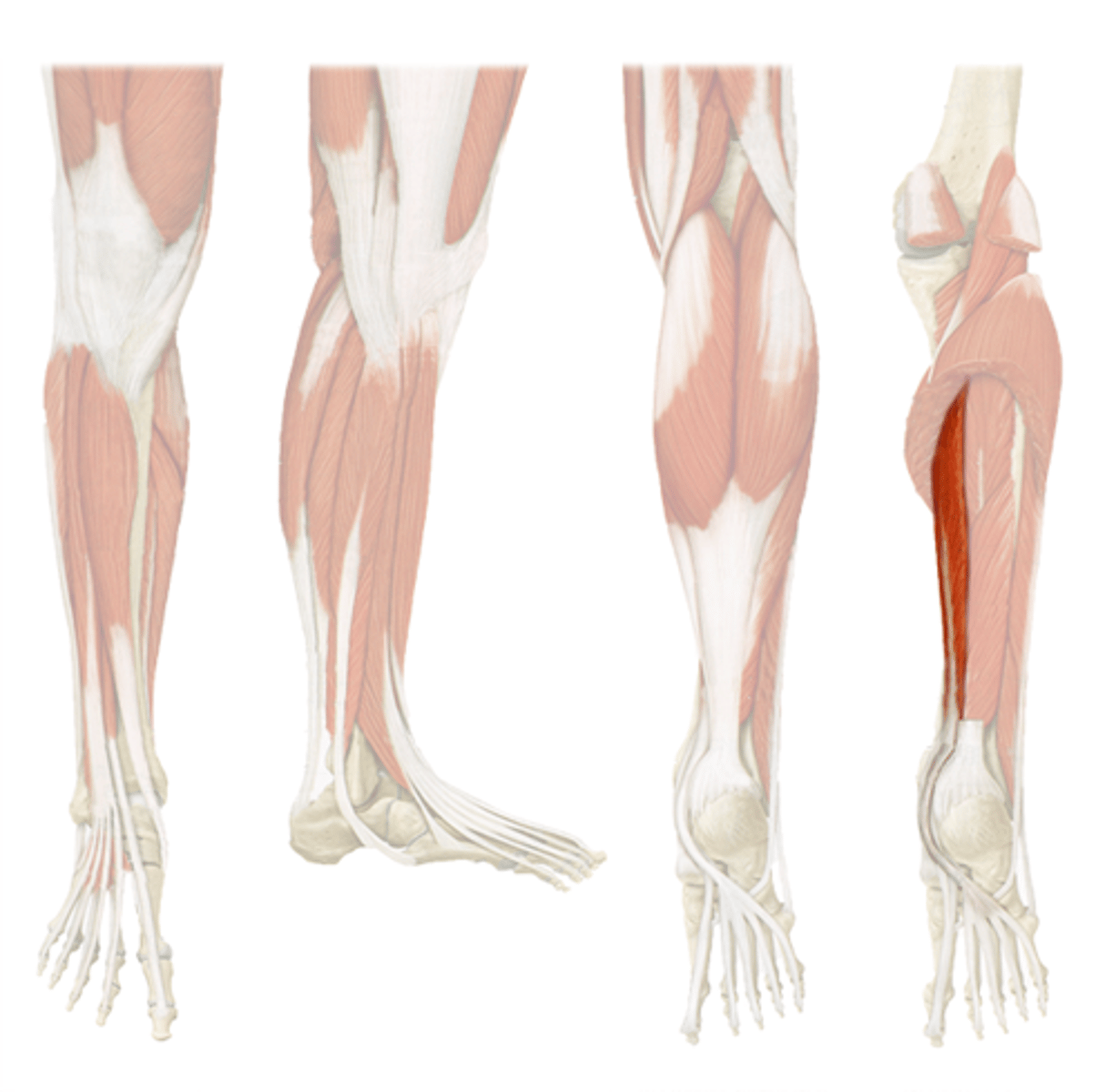BSCI201 - Muscles: includes orgin, insertion, and action
1/64
There's no tags or description
Looks like no tags are added yet.
Name | Mastery | Learn | Test | Matching | Spaced |
|---|
No study sessions yet.
65 Terms
Frontal Belly of Epicranius
O: epicranial aponeurosis
I: eyebrow skin
A: raises eyebrows
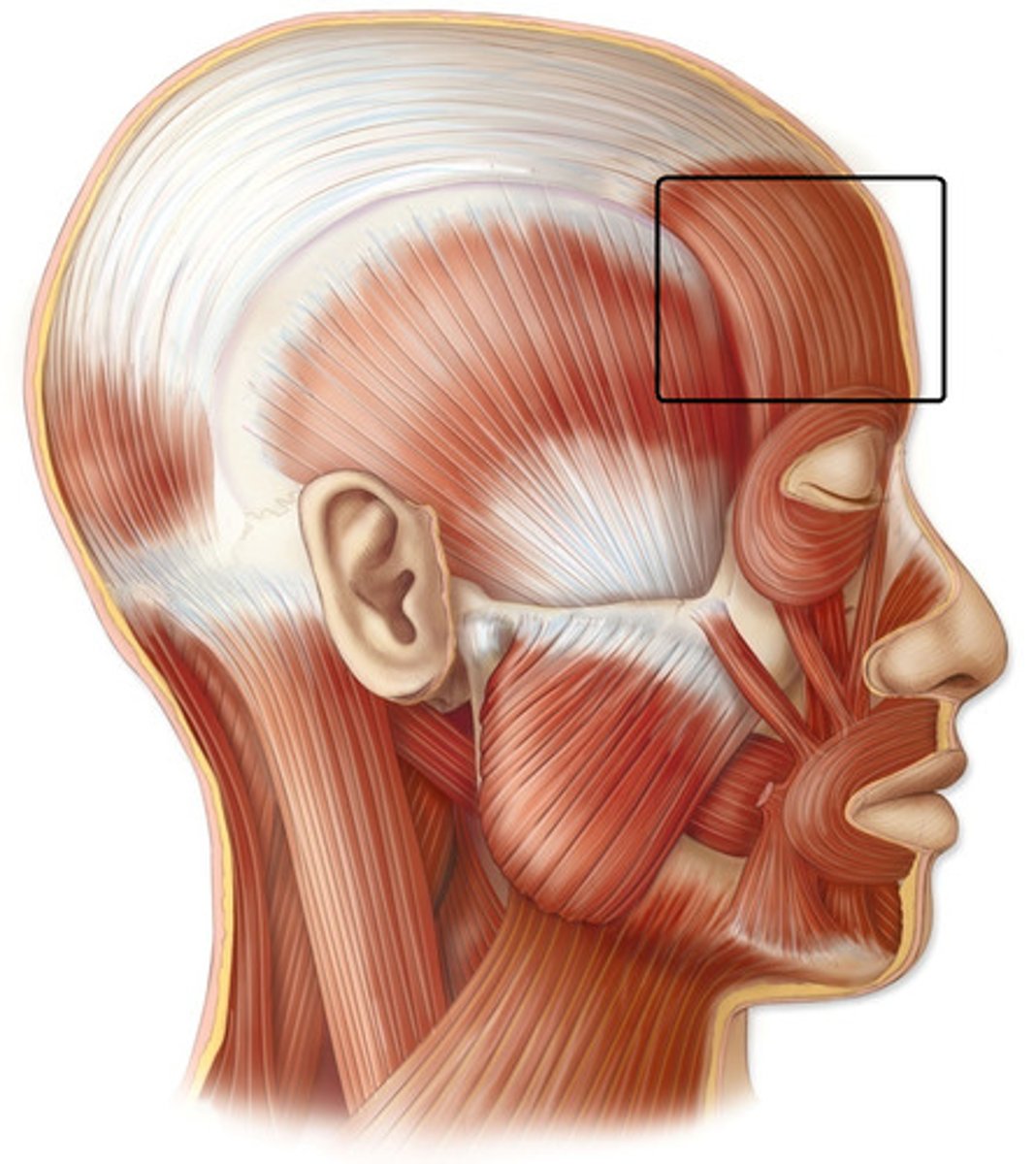
Occipital Belly of Epicranius
O: occipital/temporal bones
I: epicranial aponeurosis
A: fixes aponeurosis pulls scalp posteriorly
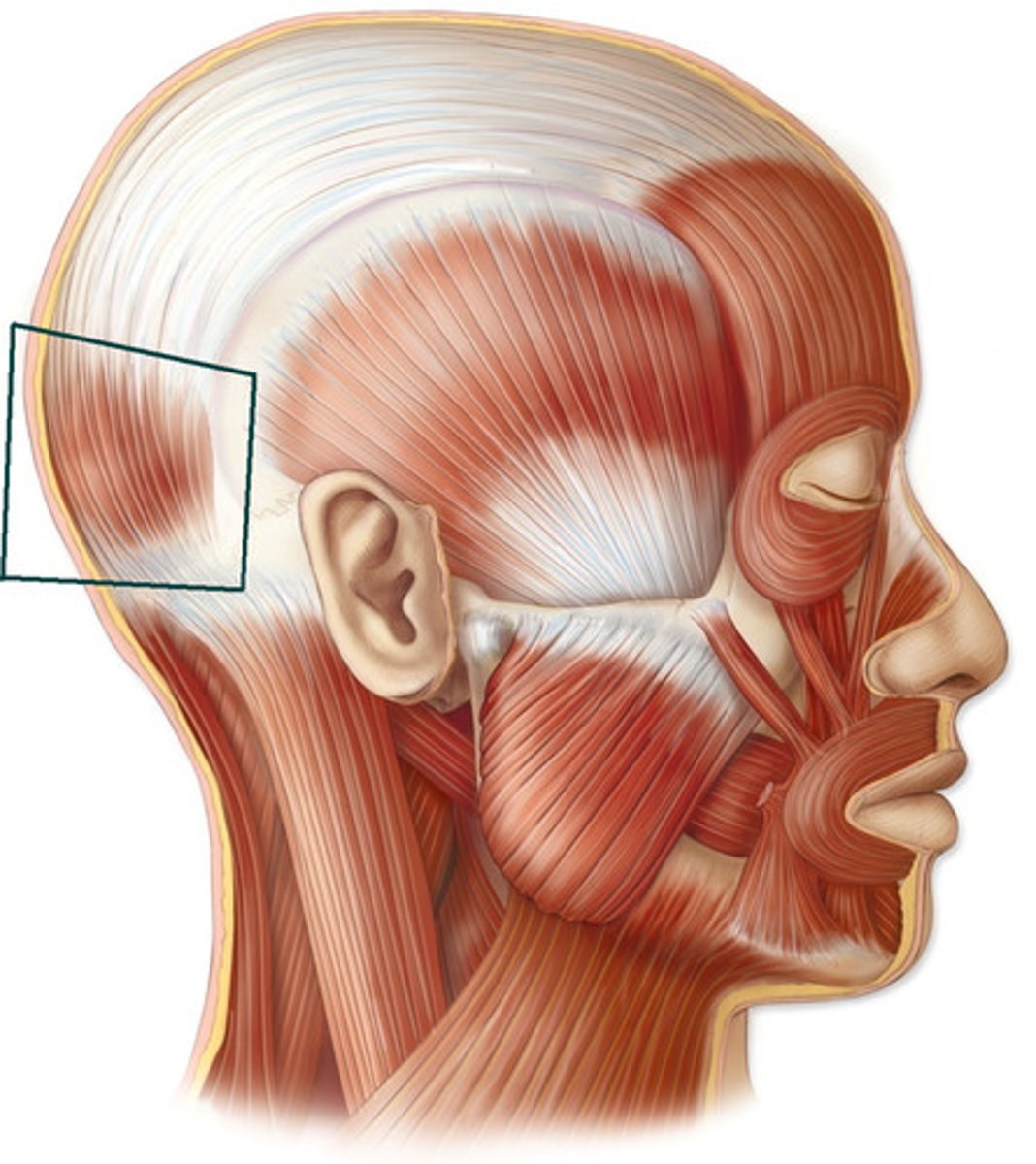
Oribicularis Oculi
O: frontal bone
I: eyelid
A: closes eye ;)
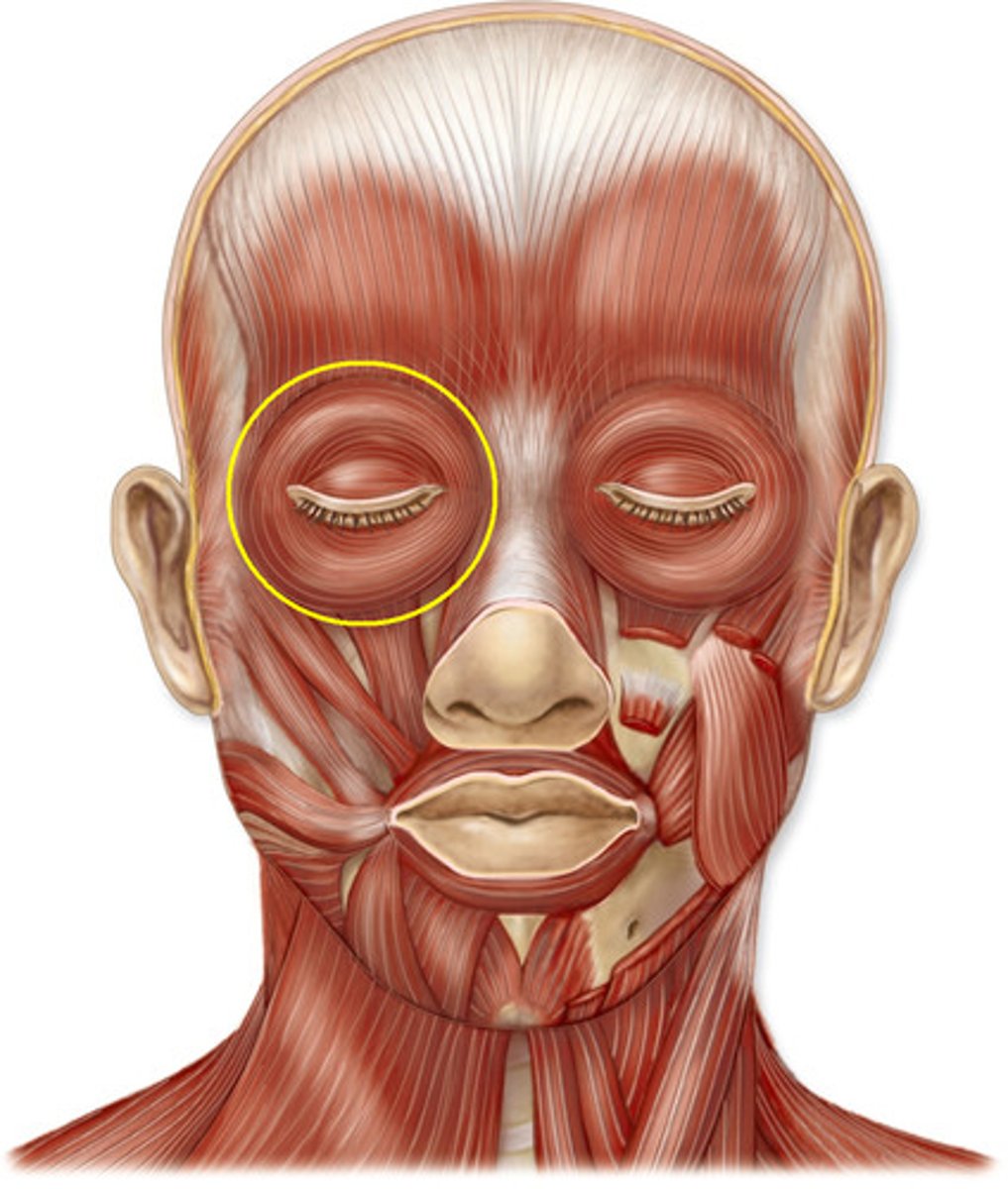
Zygomaticus Major (bigger)
Major
O: zygomatic bone
I: tissue at angle of mouth
A: raises angle of mouth (i.e. smiling!)
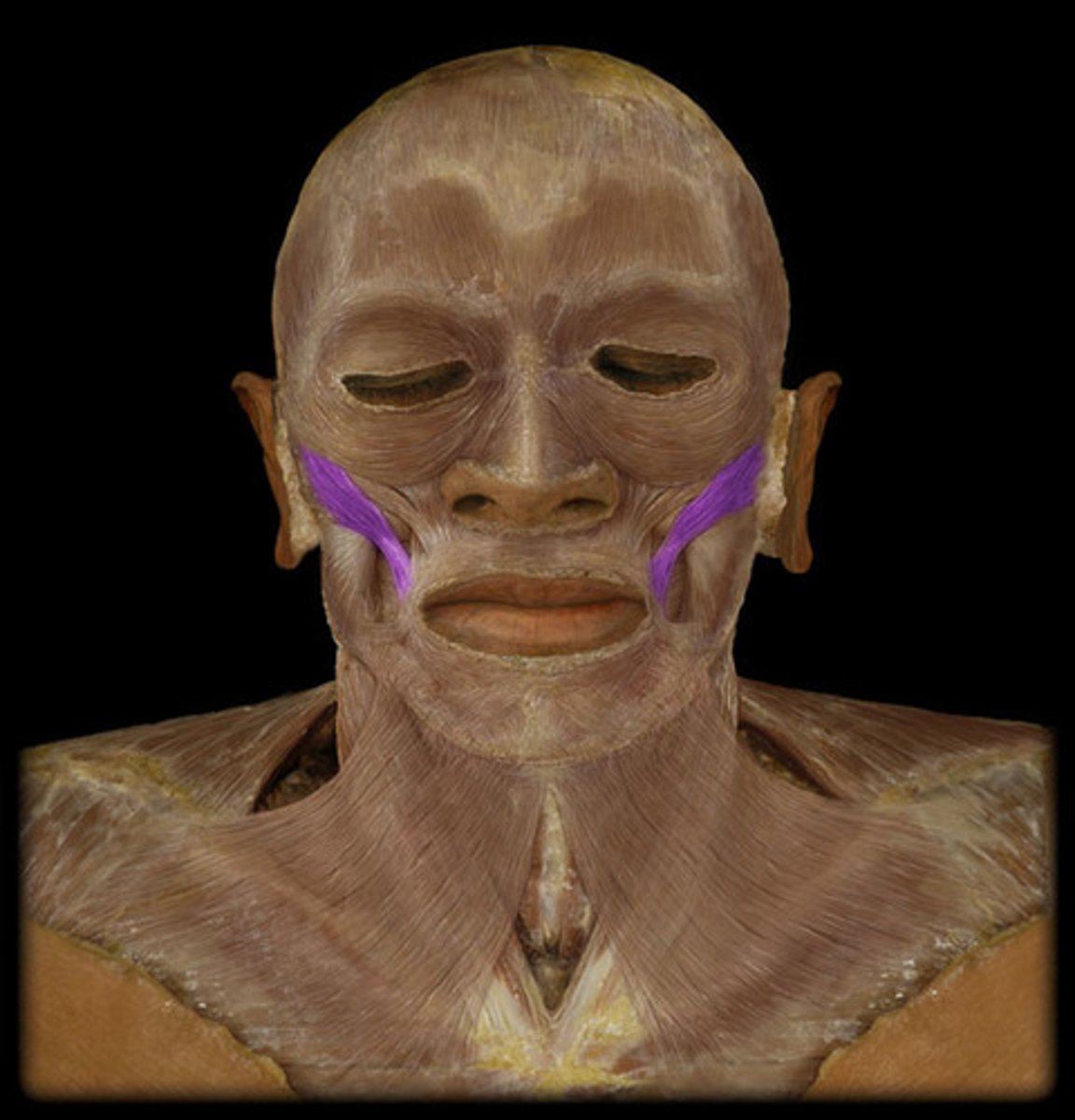
Zygomaticus Minor (smaller)
O: zygomatic bone
I: skin at the corner of mouth
A: raises angle of mouth (i.e. smiling!)
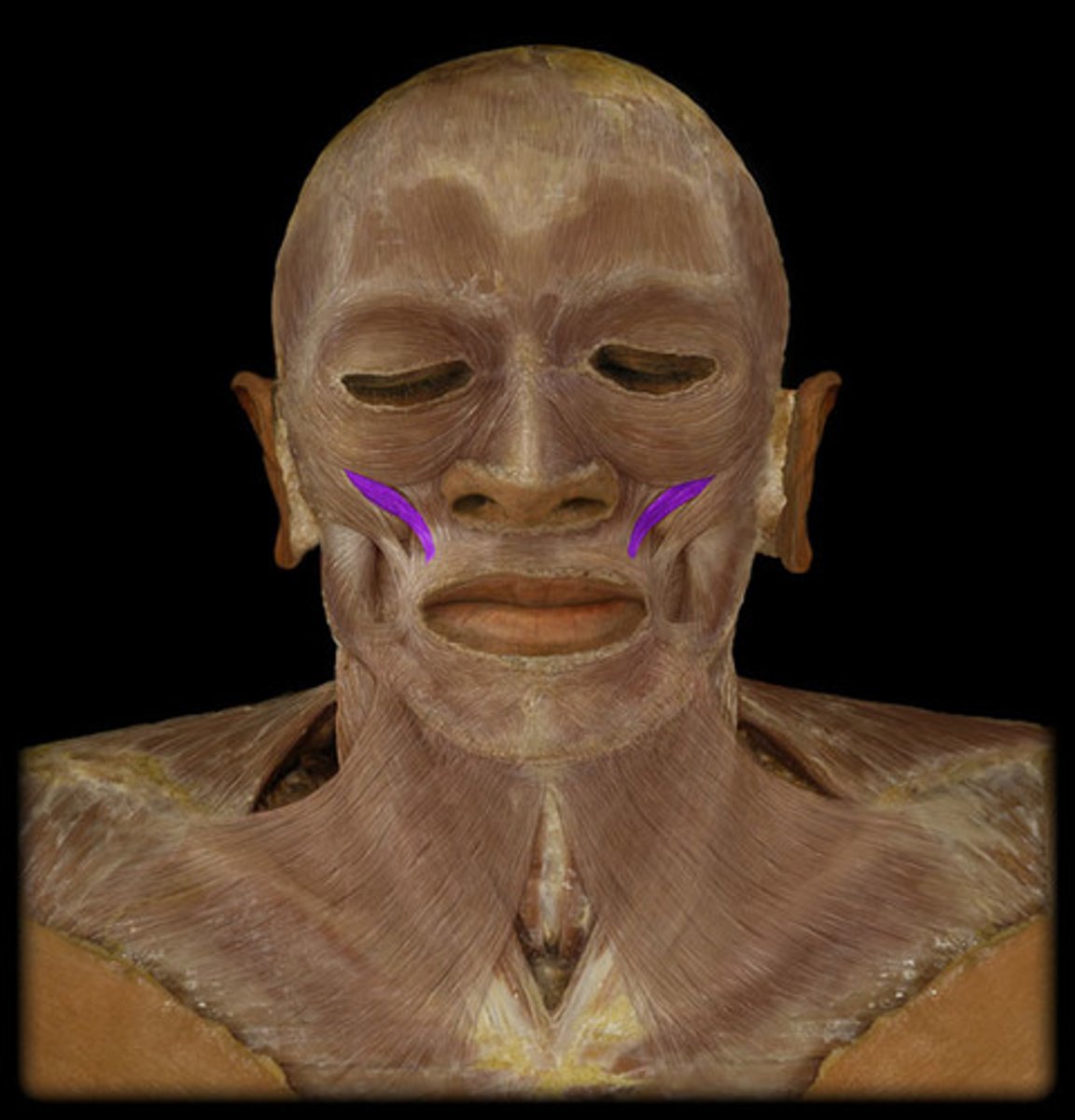
Orbicularis Oris
O: maxilla and mandible
I: lips
A: compresses and purses lips (like a kiss!)
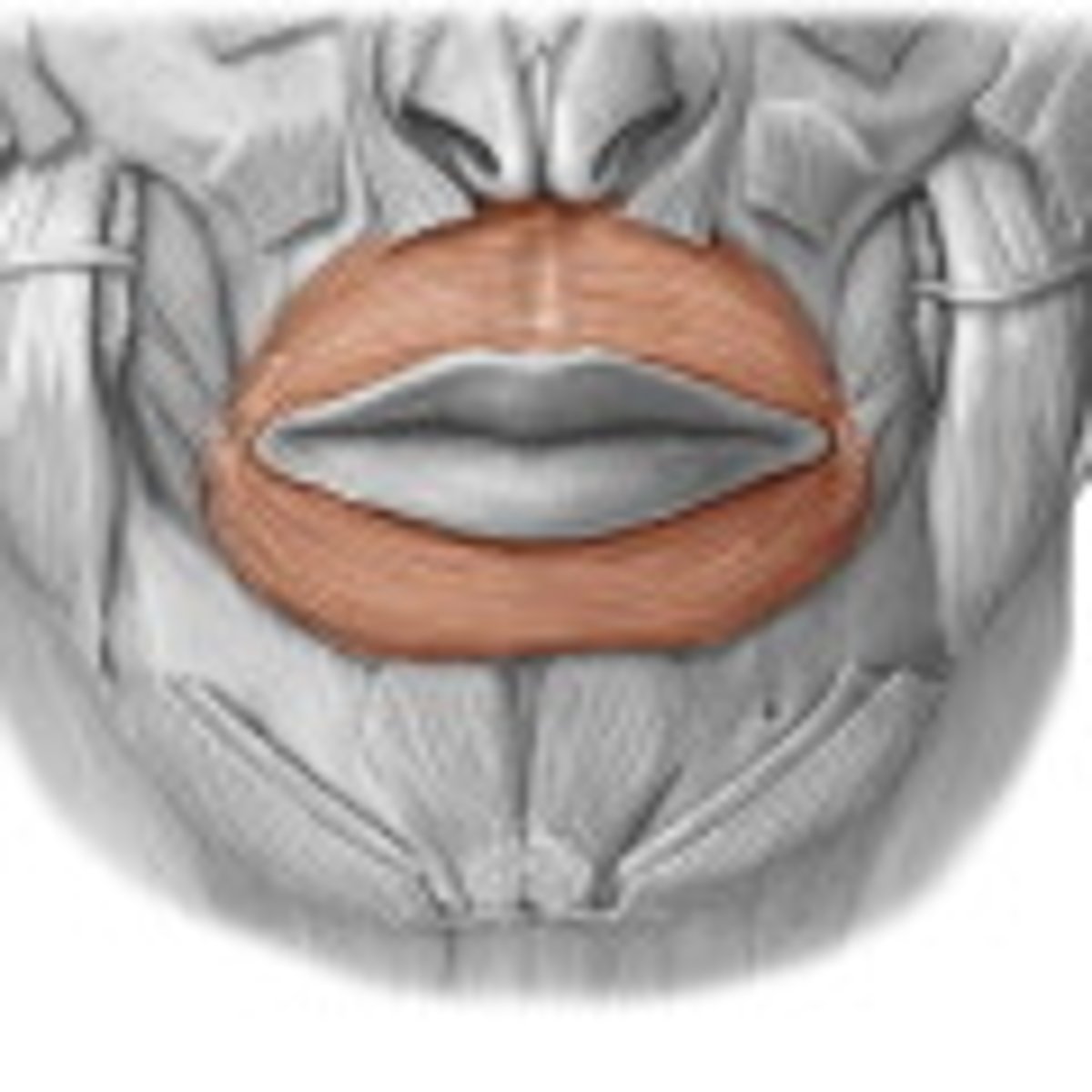
Buccinator
O: maxilla
I: orbicularis oris
A: compresses cheek (whistling)
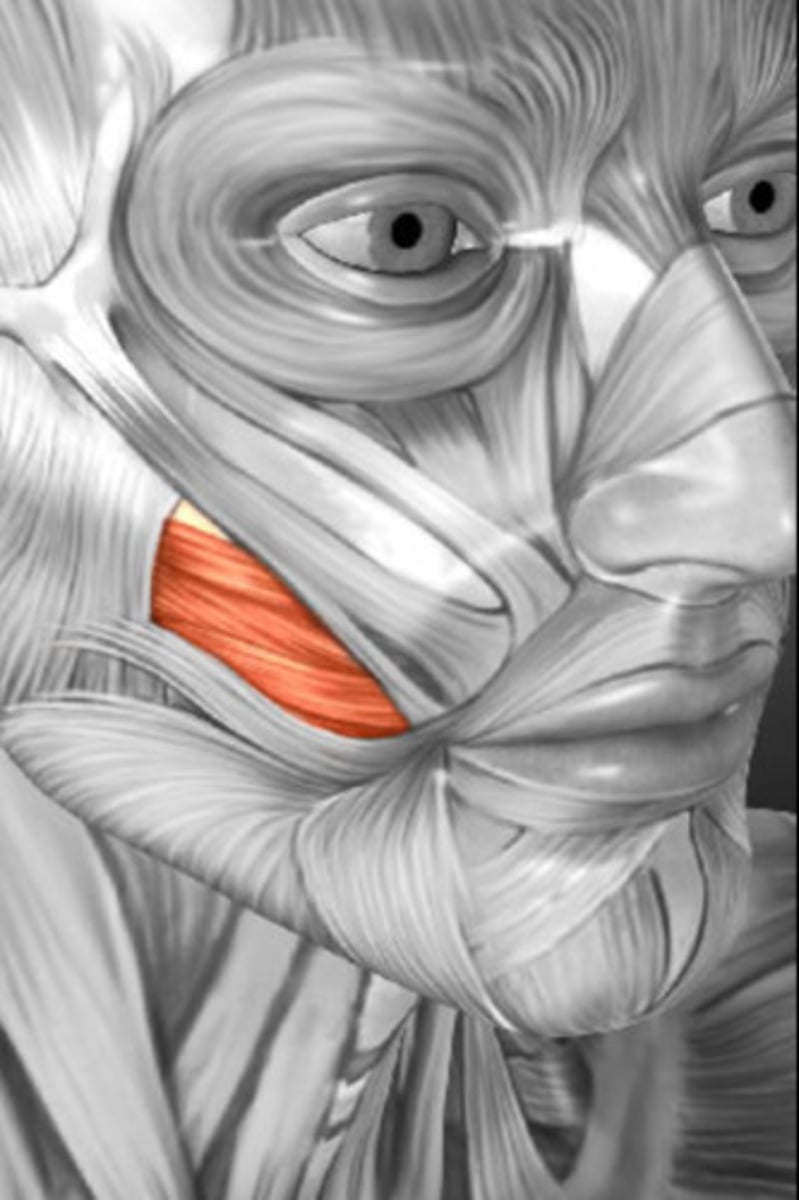
Masseter
O: zygomatic bone
I: mandible
A: jaw closure (prime mover)
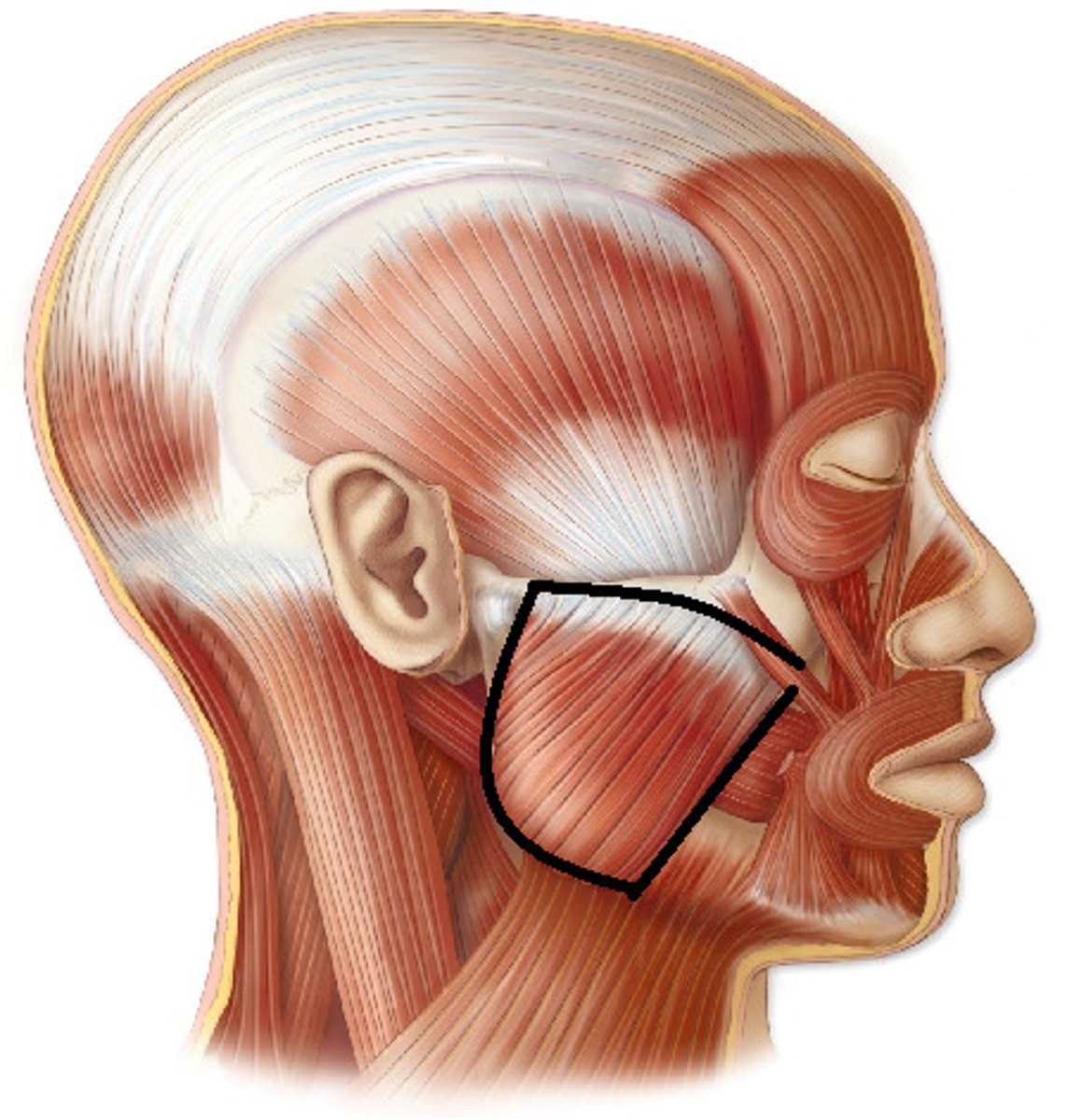
Temporalis
O: temporal bone
I: mandible
A: jaw closure (assists masseter)

Platysma
O: chest fascia
I: mandible
A: tenses skin of neck (secondary embarrassment)
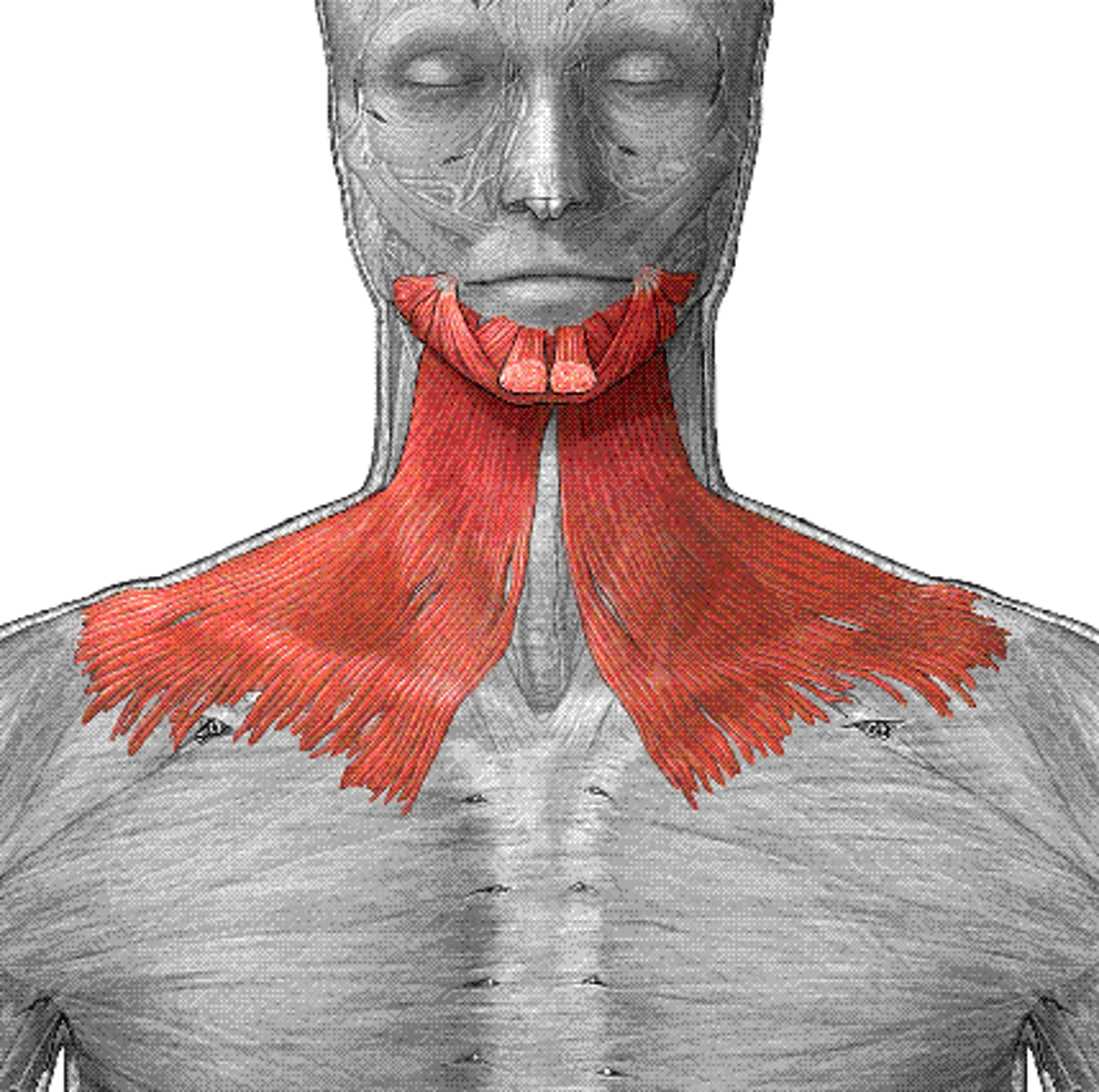
Sternocleidomastoid
O: manubrium of sternum
I: mastoid process of temporal bone
A: flexion of neck
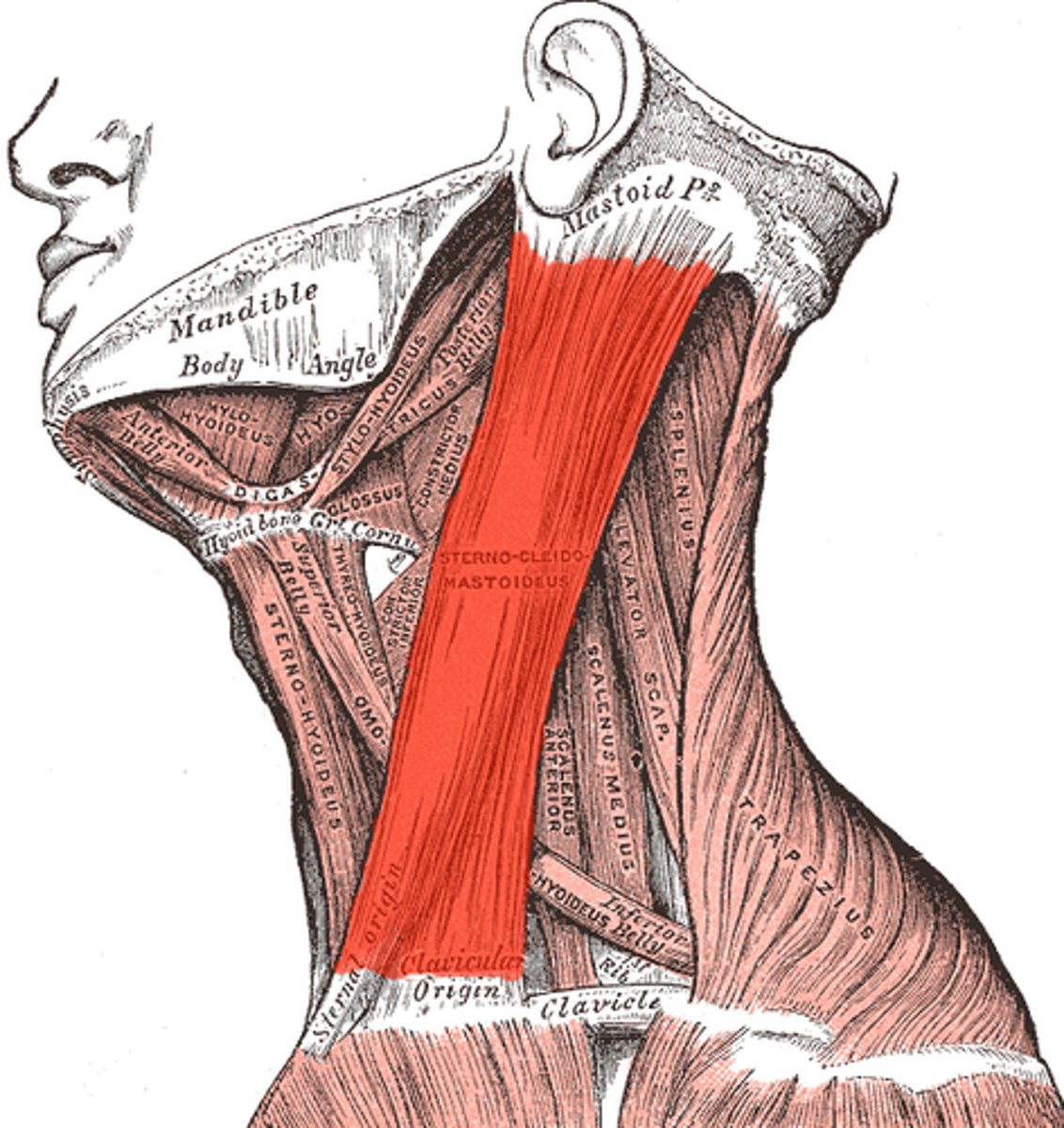
Pectoralis Major
O: clavicle, sternum
I: humerus
A: prime mover of arm flexion
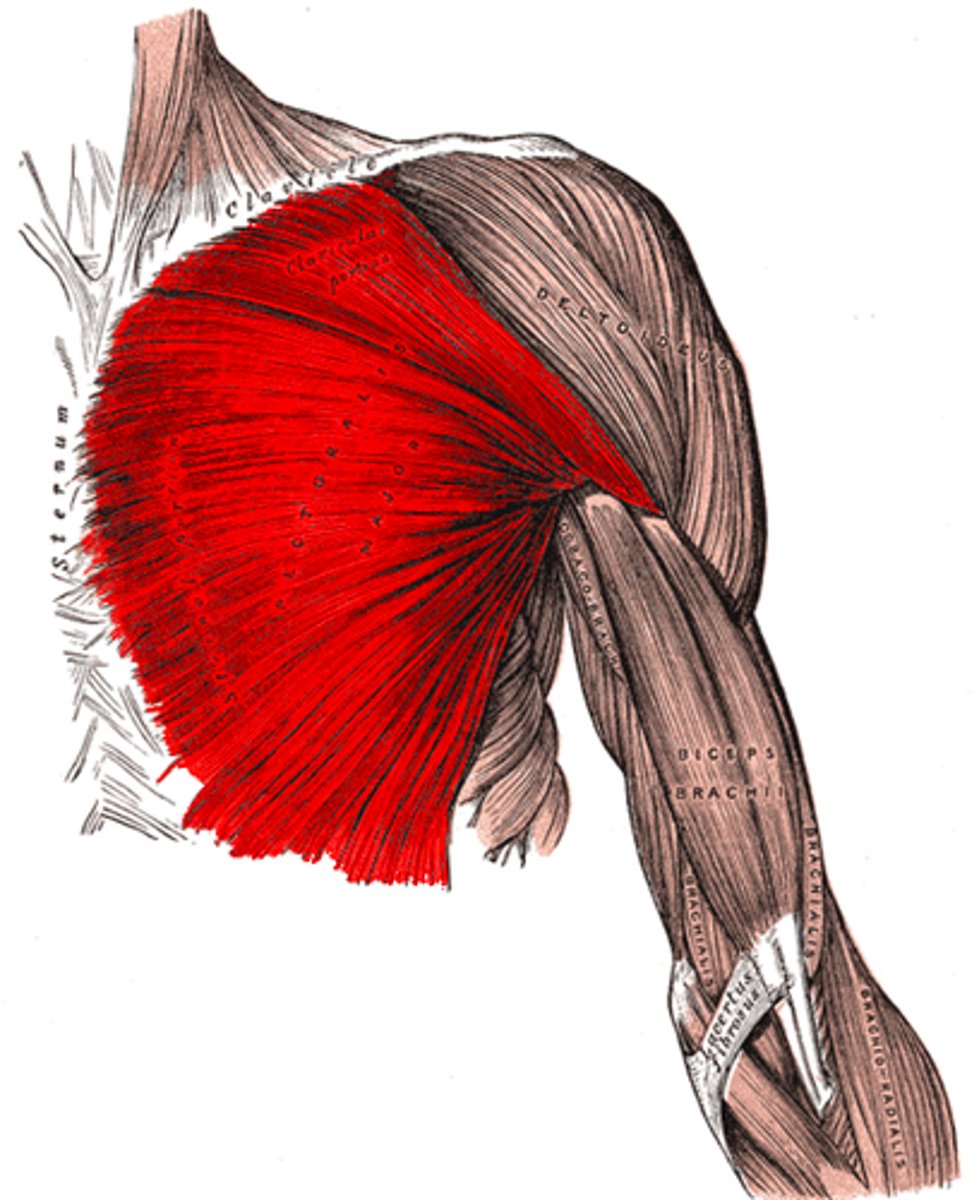
Pectoralis Minor
O: ribs
I: coracoid process of scapula
A: anterior/inferior scapular movement
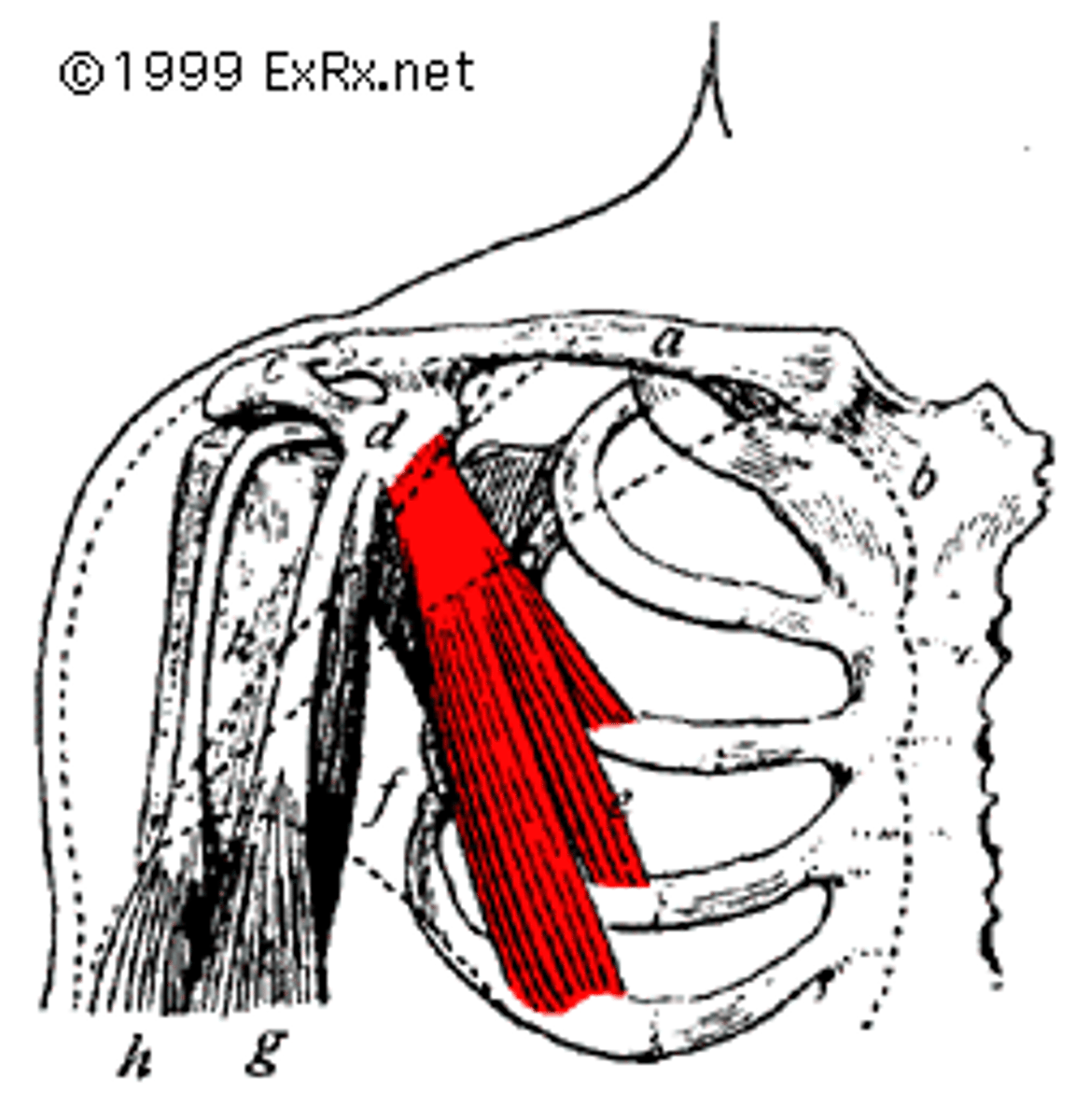
Serratus Anterior
O: ribs
I: scapula
A: prime mover to protract scapula

Deltoid
O: clavicle
I: deltoid tuberosity of humerus
A: abduction of arm (prime mover)
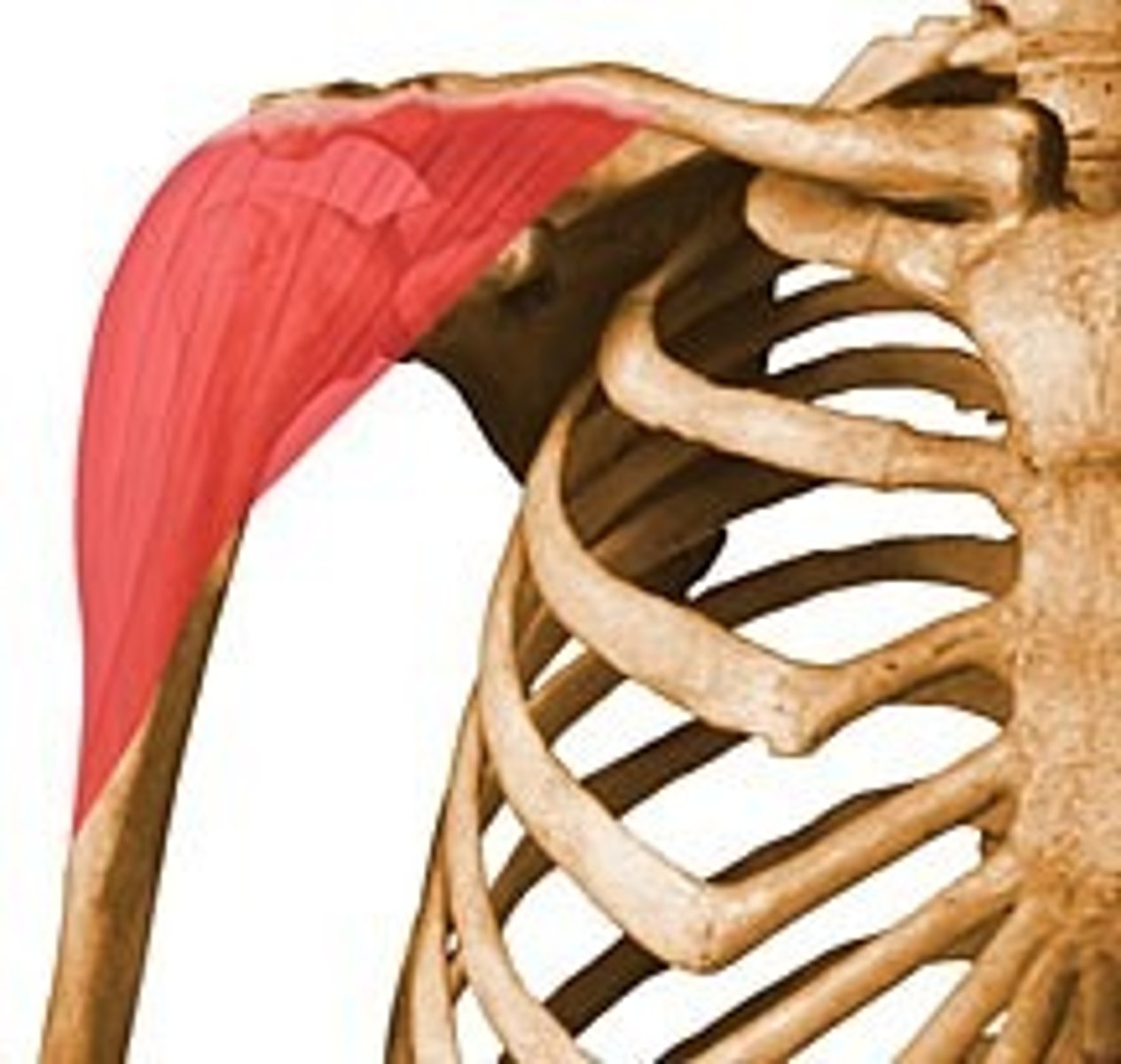
External Intercostals
O: inferior border of above rib
I: superior border of below rib
A: pulls ribs together to elevate (E=elevates)
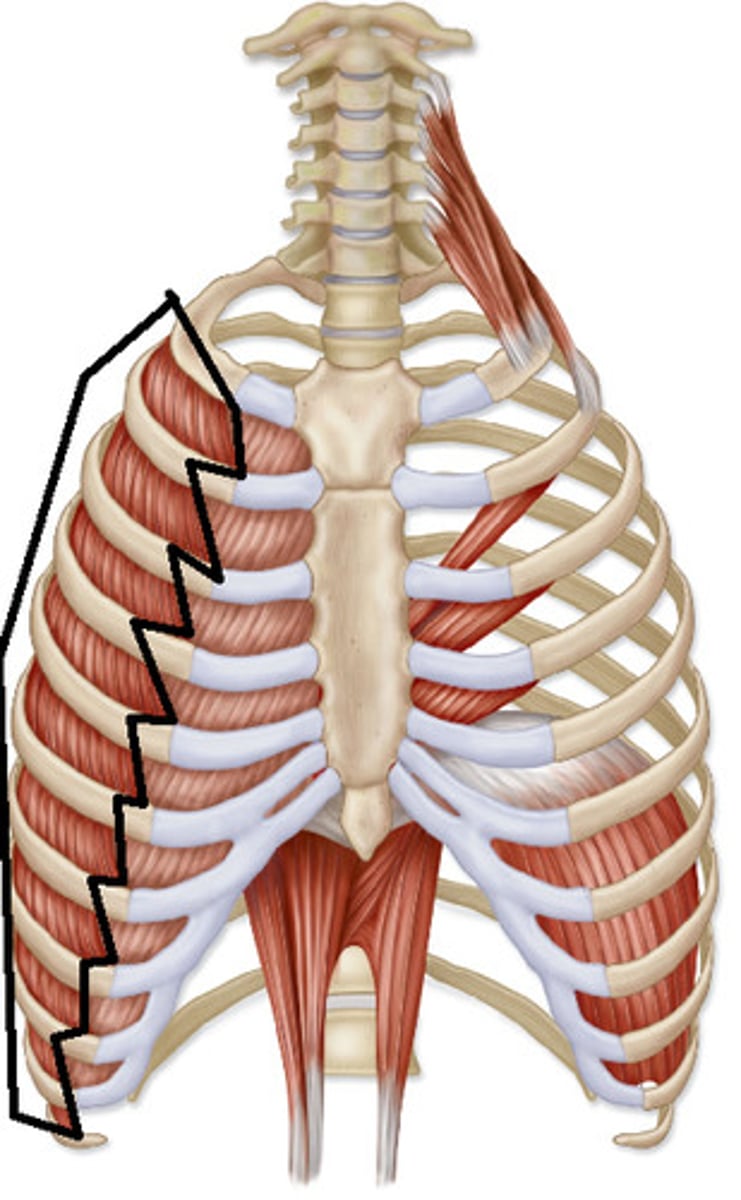
Internal Intercostals
O: superior border of rib below
I: inferior border of rib above
A: pulls ribs together to depress (I=inferior movement)

Diaphragm
O: rib
I: central tendon
A: inspiration (prime mover)
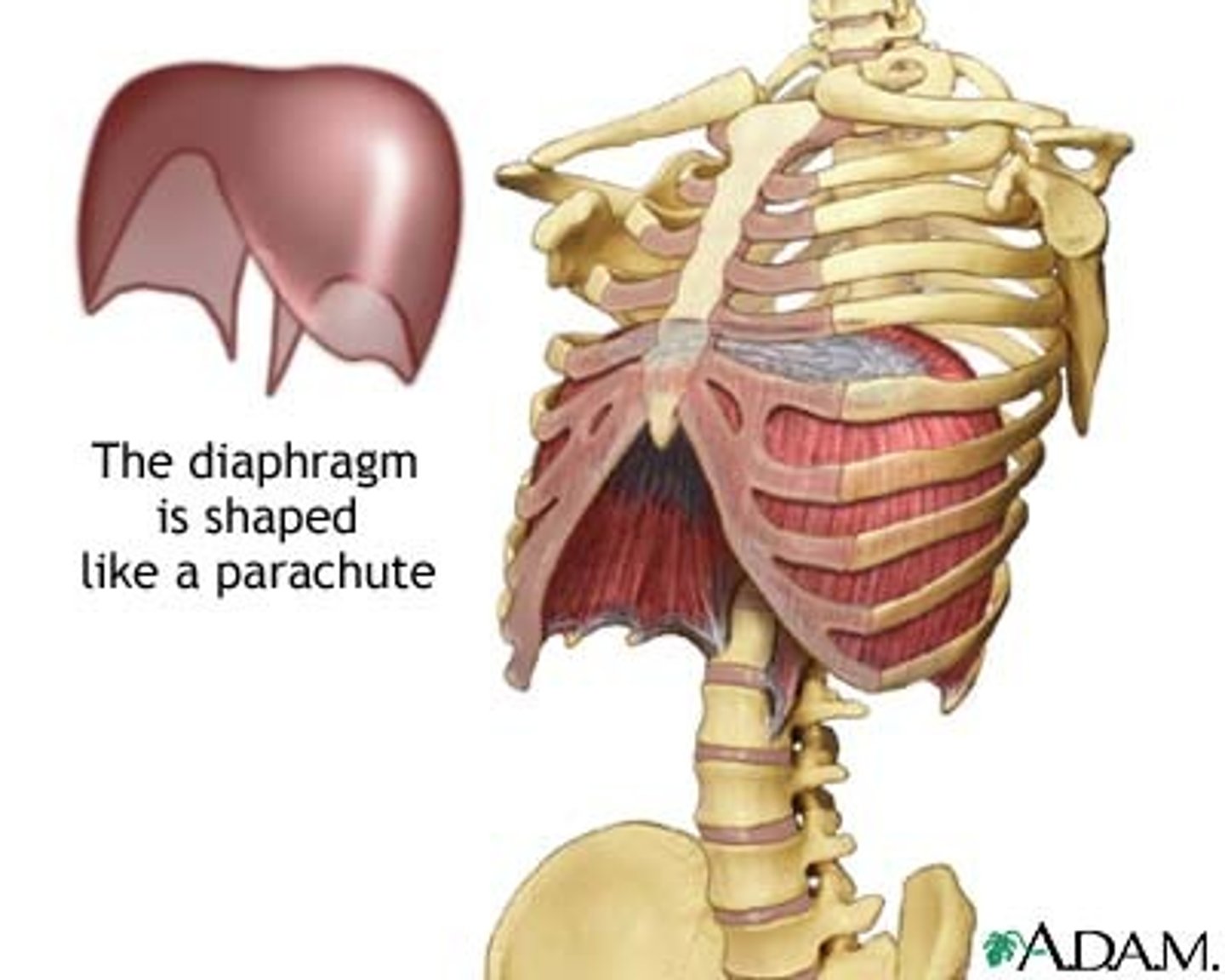
Rectus Abdominis
O: pubic bone (pubis)
I: xiphoid process of sternum
A: flexes & rotates vertebral column
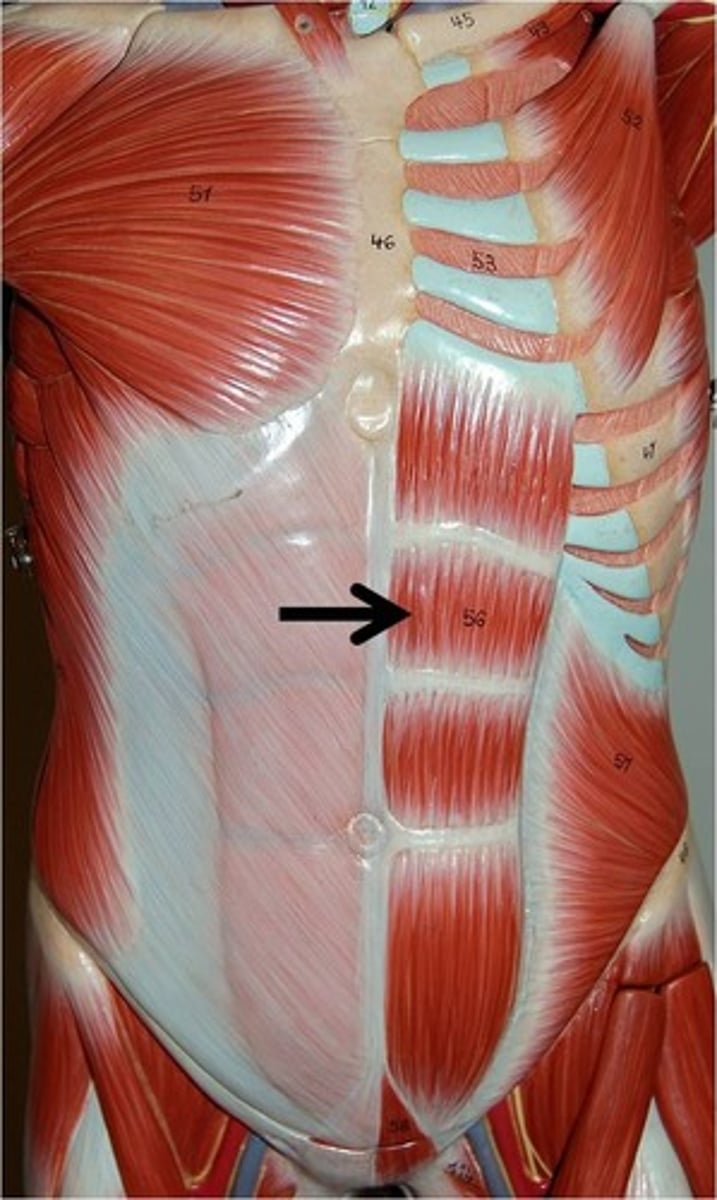
External Oblique
O: ribs
I: pubic bone (pubis), ilium
A: compresses abdominal wall
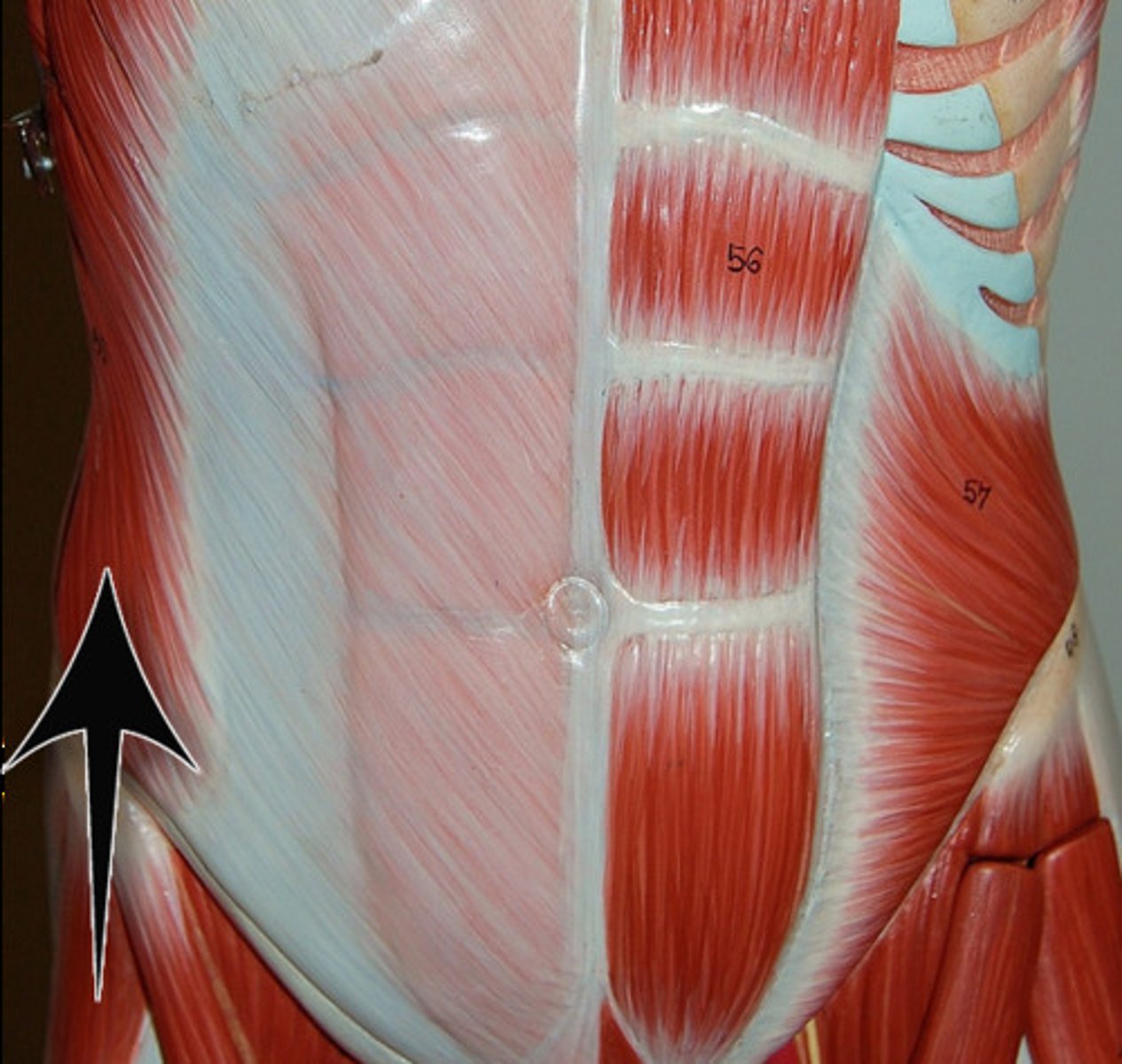
Internal Oblique
O: ilium
I: pubic bone (pubis)
A: compresses abdominal wall
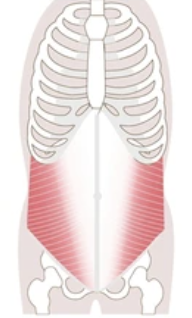
Transversus Abdominis
O: ilium
I: pubic bone
A: compresses abdominal contents
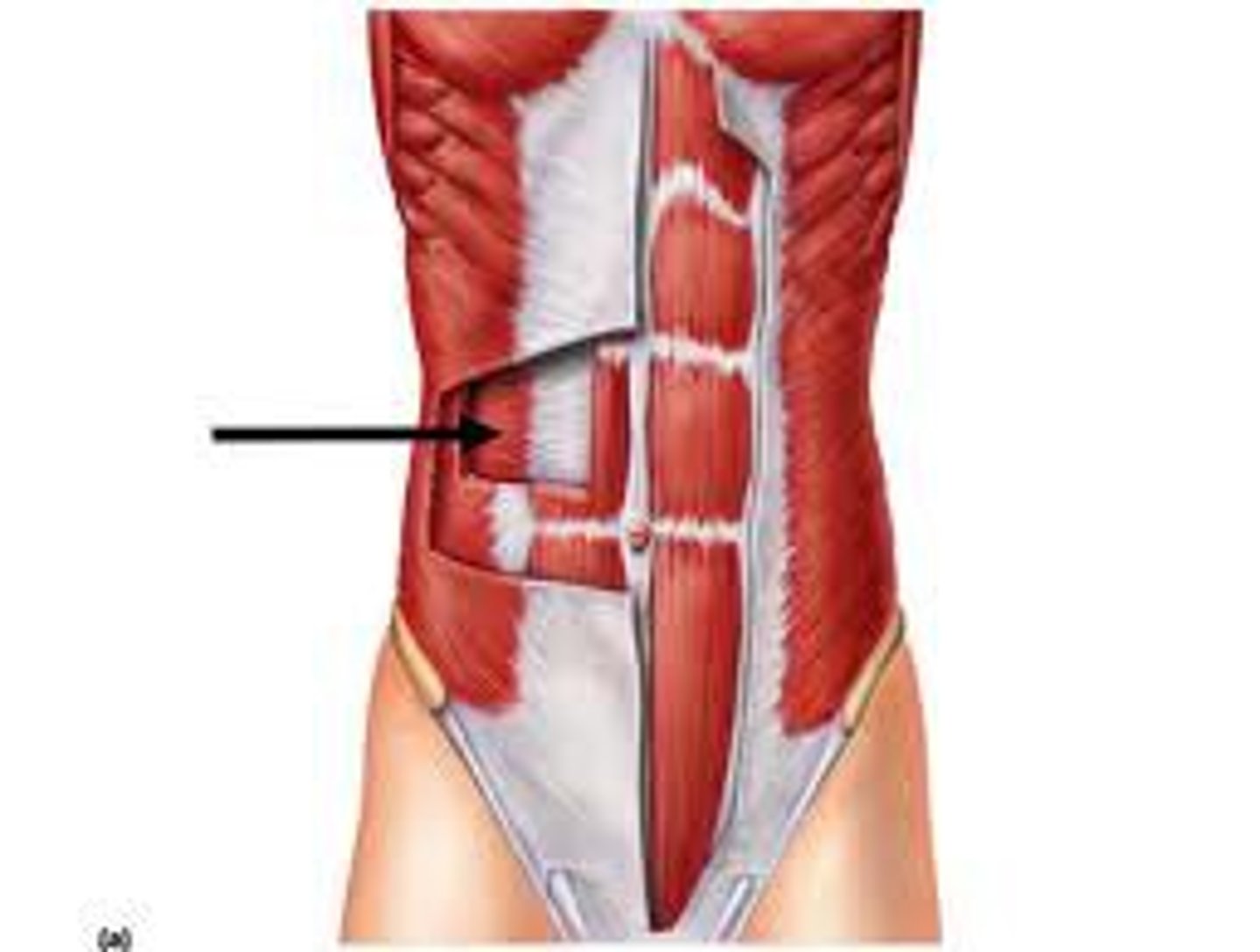
Trapezius
O: occipital bone all Thoracic Vertebrae
I: acromion of scapula
A: raises scapula
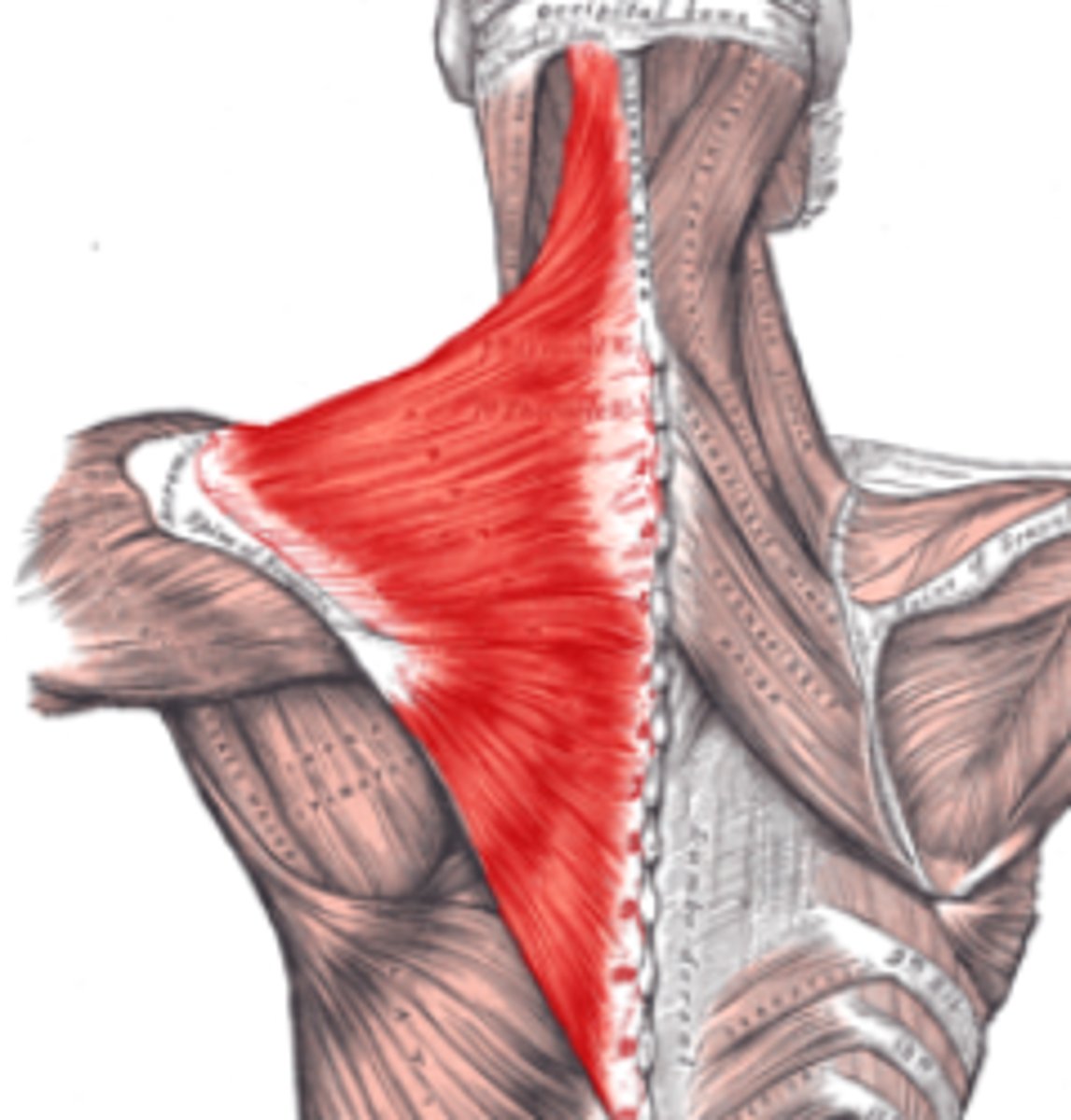
Latissimus Dorsi
O: spinous processes of thoracic/lumbar vertebrae
I: humerus
A: arm extension
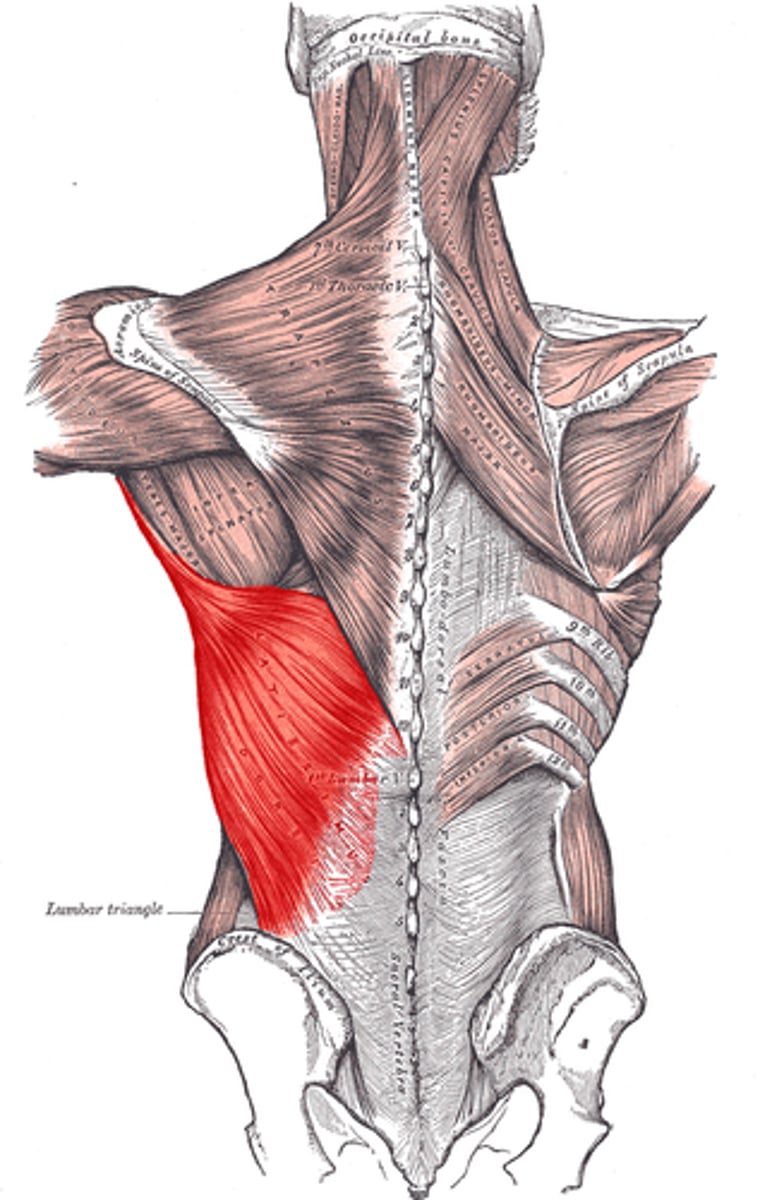
Infraspinatus
O: scapula
I: greater tubercle of humerus
A: lateral arm rotation

Teres Minor
O: scapula
I: greater tubercle of humerus
A: lateral rotation of arm
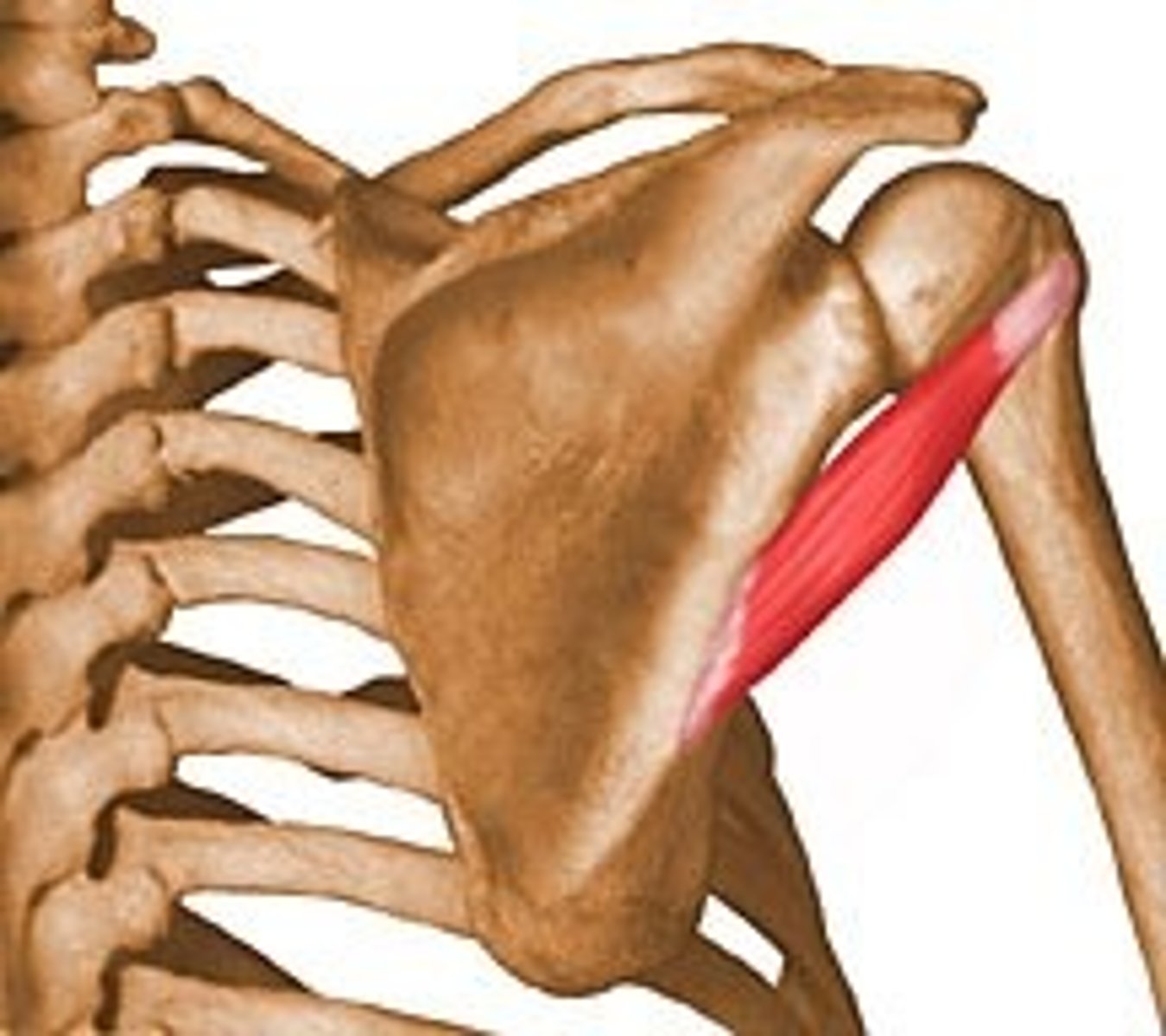
Supraspinatus
O: scapula
I: greater tubercle of humerus
A: initiates arm abduction
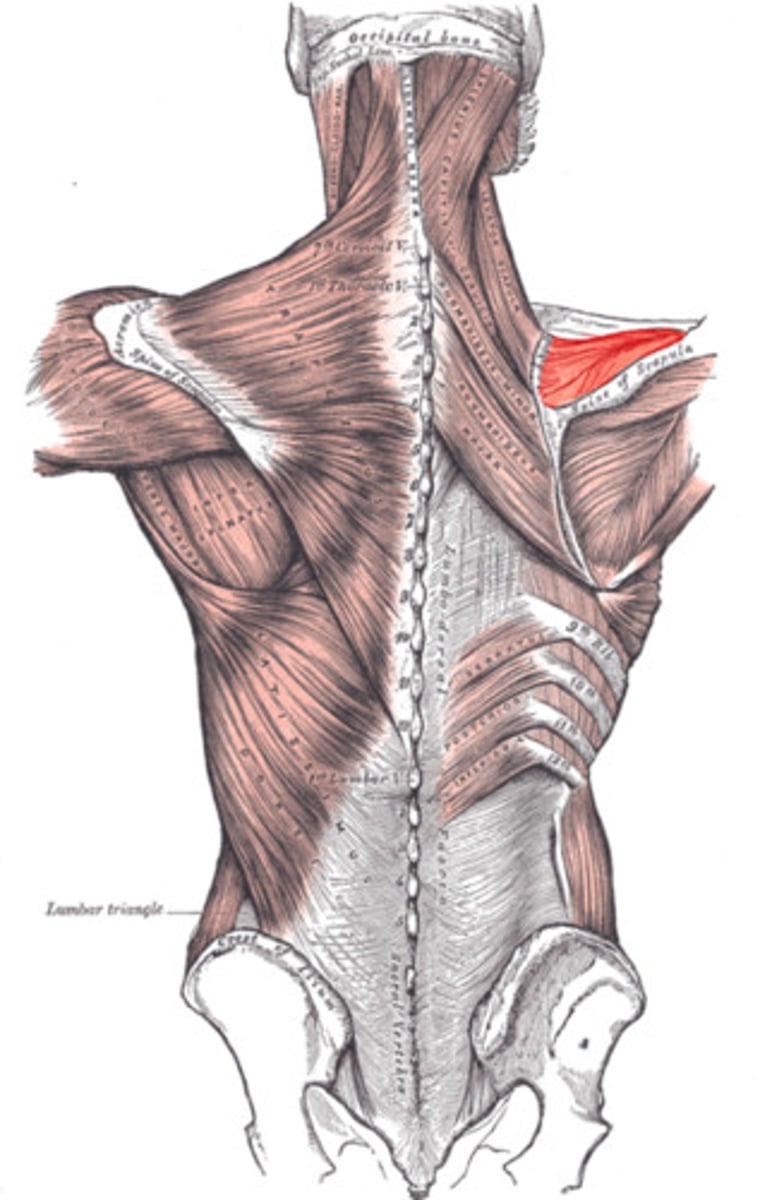
Teres Major
O: scapula
I: humerus
A: extends, adducts arm

Rhomboids Major
O: spinous process of C7
I: scapula
A: stabilizes scapula
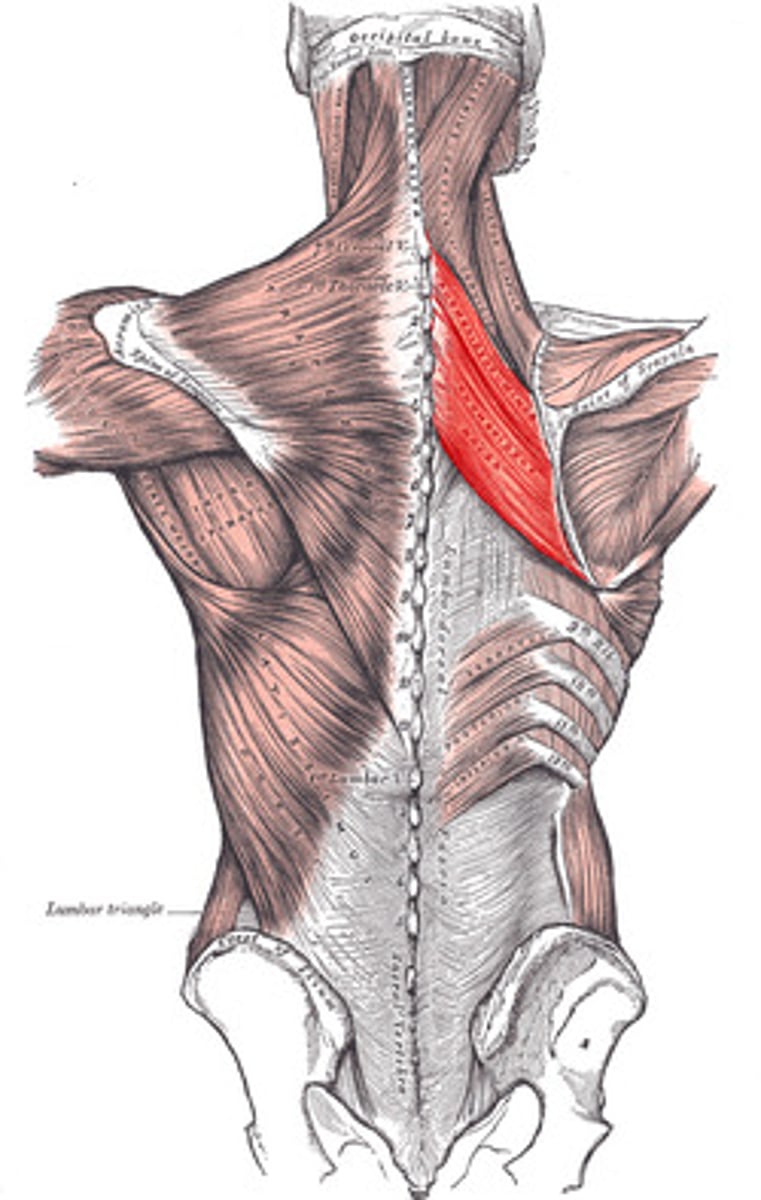
Rhomboids Minor
O: Spinous processes of C7 vertebrae
I: scapula
A: stabilizes scapula
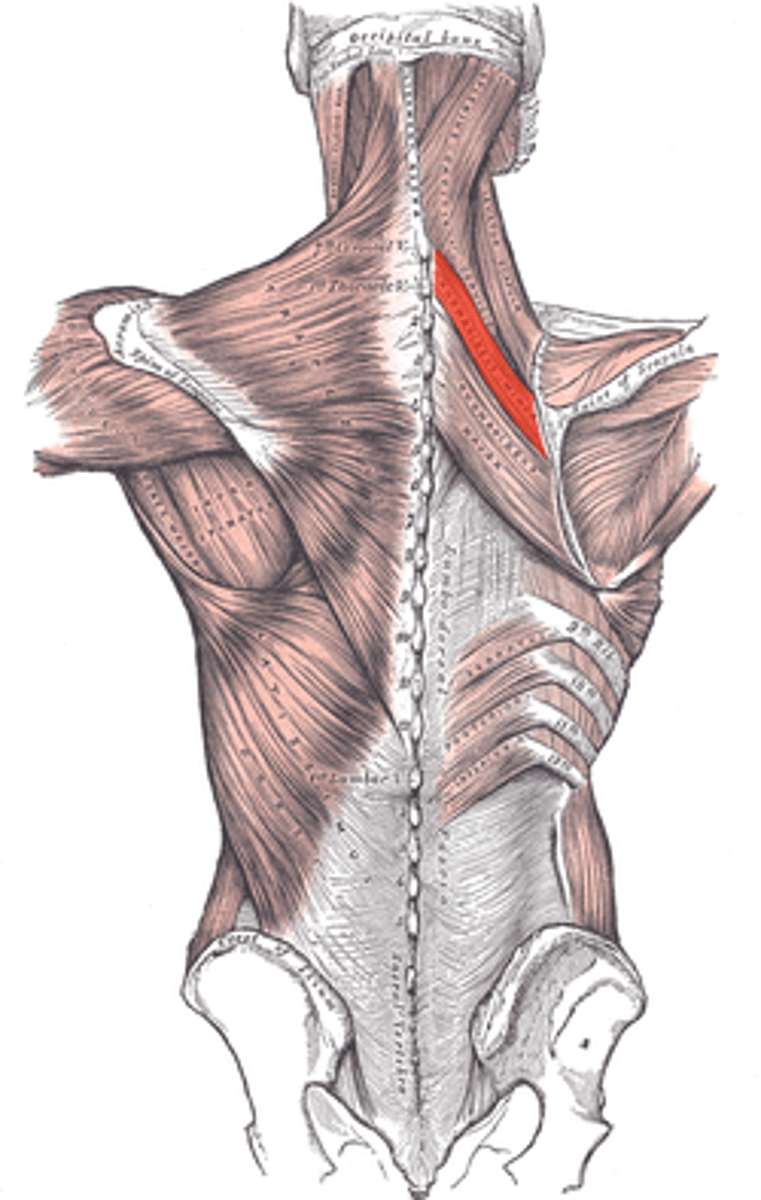
Triceps Brachii
O: glenoid cavity of scapula
I: olecranon of ulna
A: extension of forearm
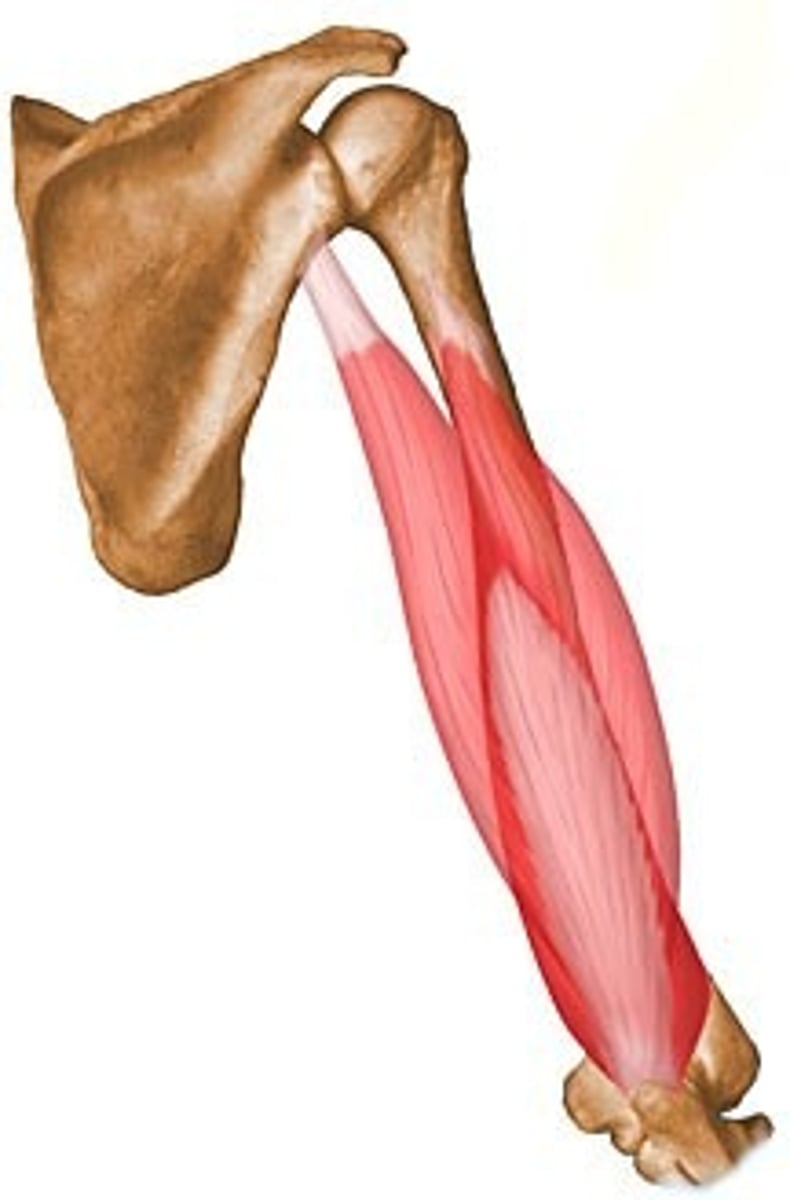
Biceps Brachii
O: glenoid cavity of scapula
I: radial tuberosity of radius
A: flexion of forearm
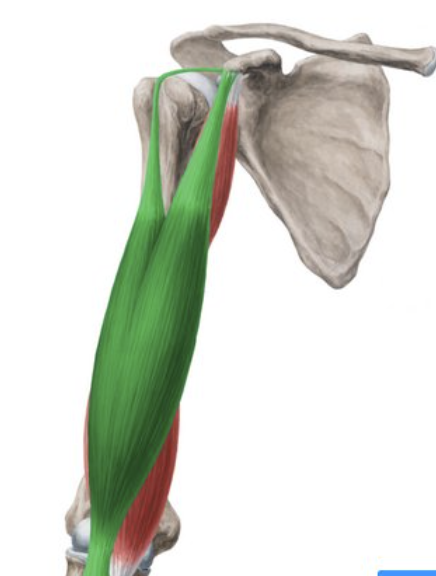
Brachioradialis
O: humerus
I: styloid process of radius
A: forearm flexion synergist
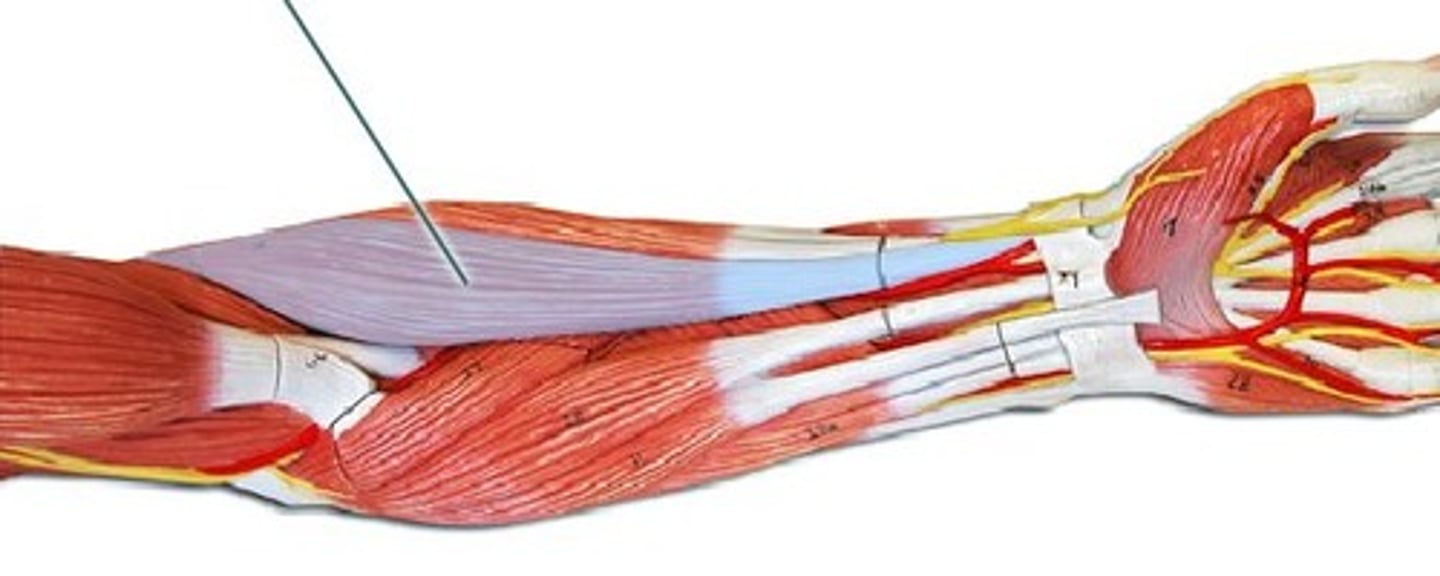
Brachialis
O: humerus
I: coronoid process of ulna
A: flexor of forearm
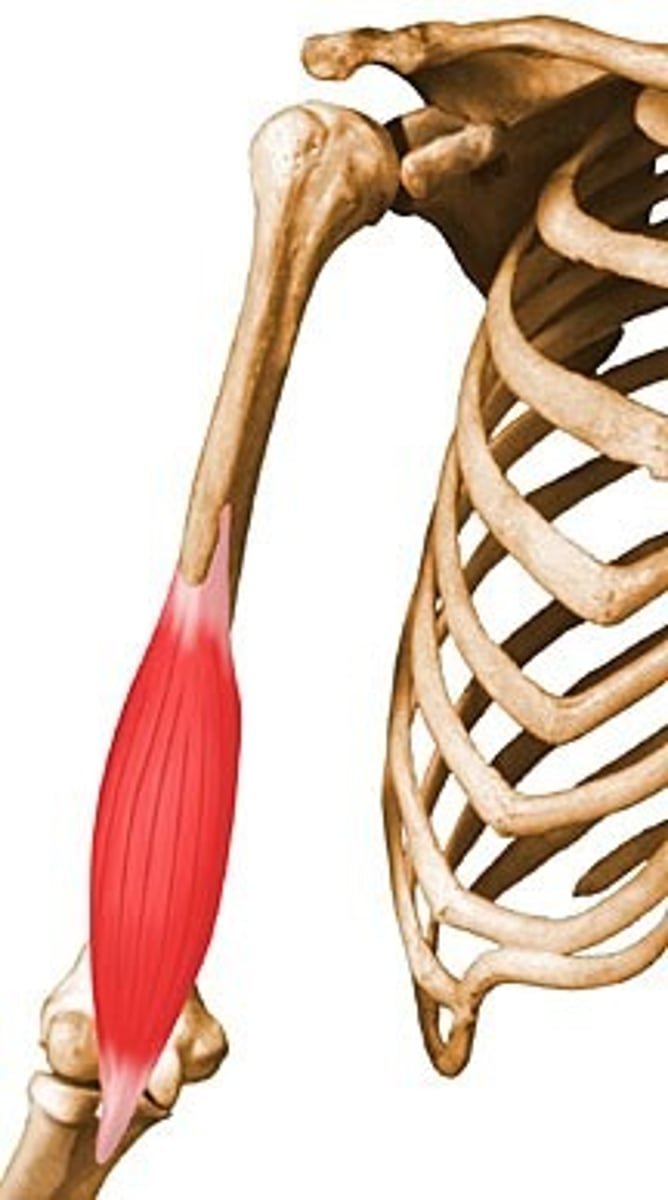
Pronator teres
O: medial epicondyle of humerus
I: radius
A: pronates forearm ("prone")
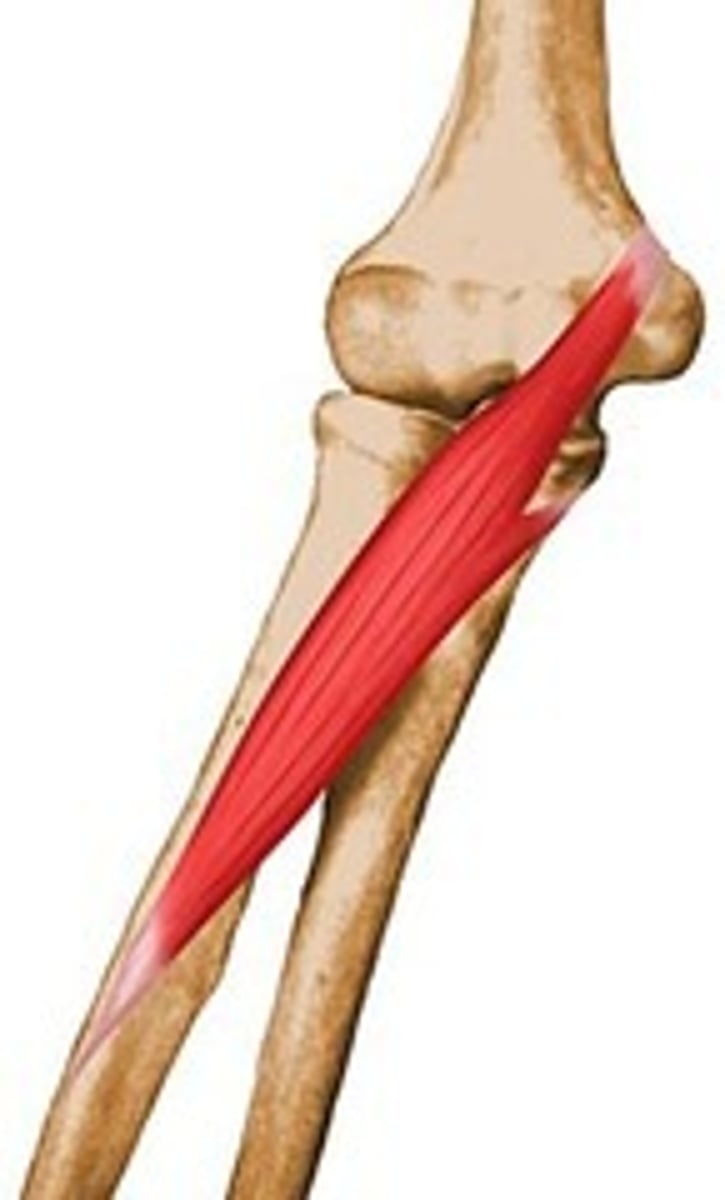
Flexor Carpi Radialis
O: medial epicondyle of humerus
I: metacarpals
A: flexor/abductor of hand
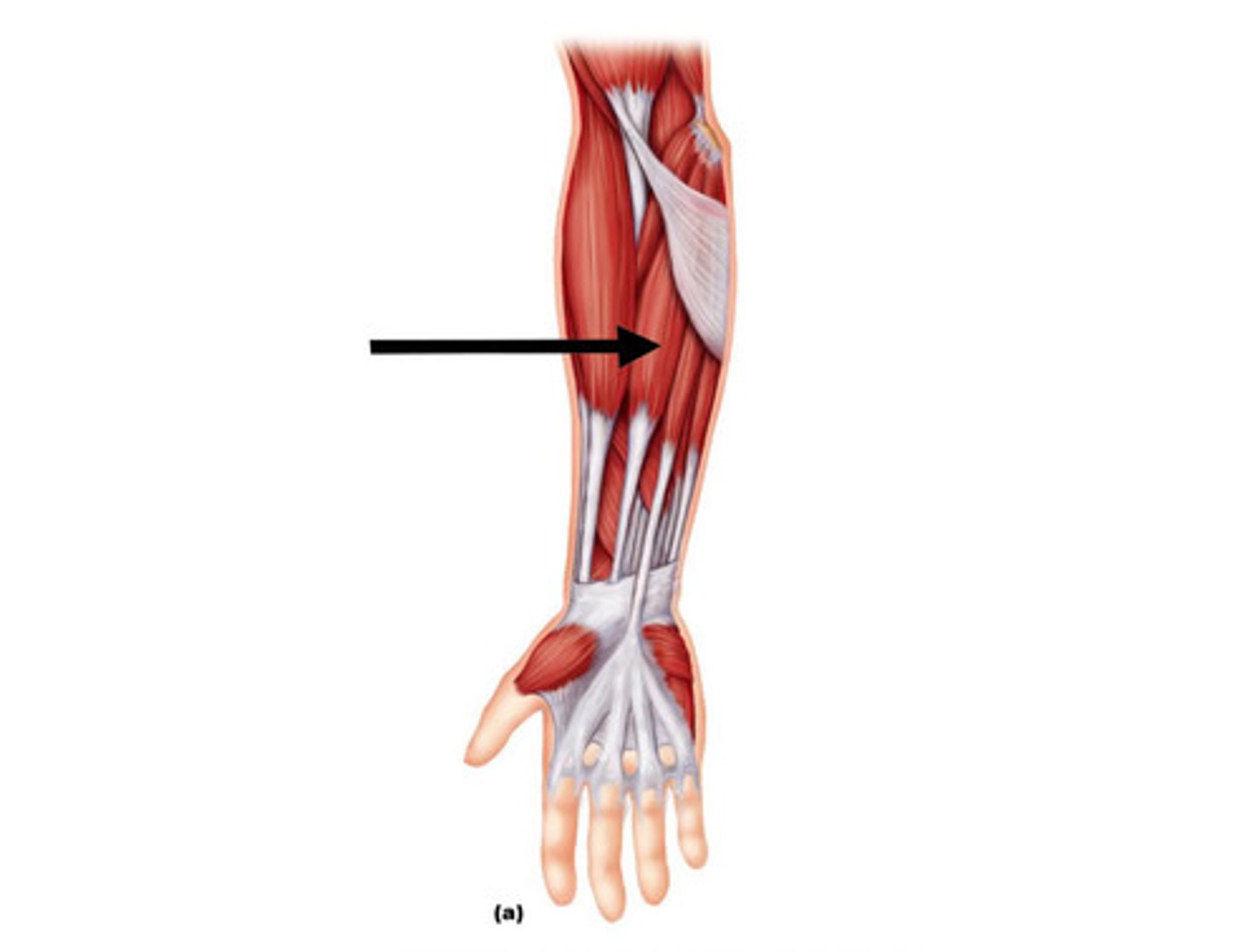
Palmaris Longus
O: medial epicondyle of humerus
I: skin of palm
A: tenses skin of palm
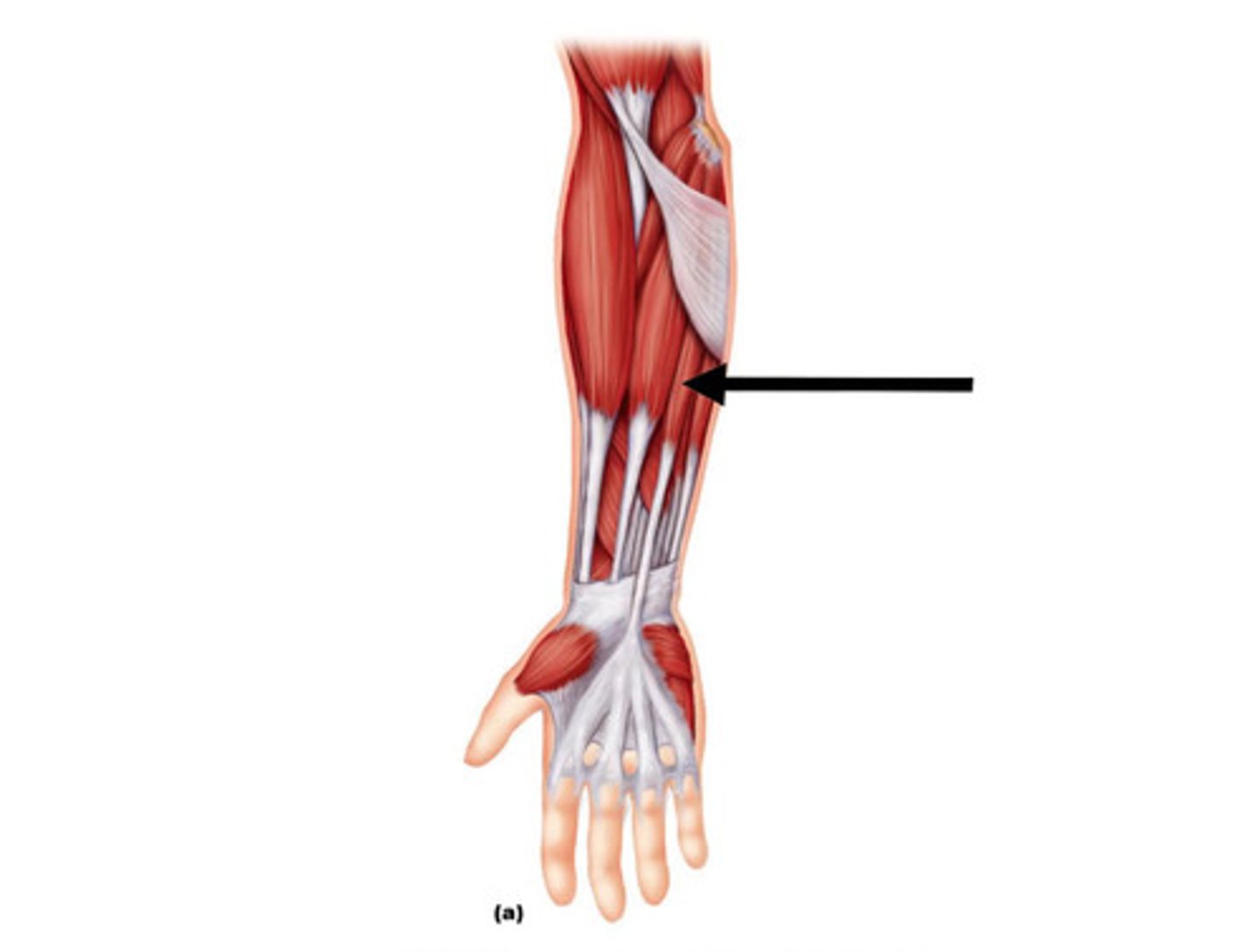
Flexor Carpi Ulnaris
O: medial epicondyle of humerus
I: metacarpals
A: flexor and abductor of hand
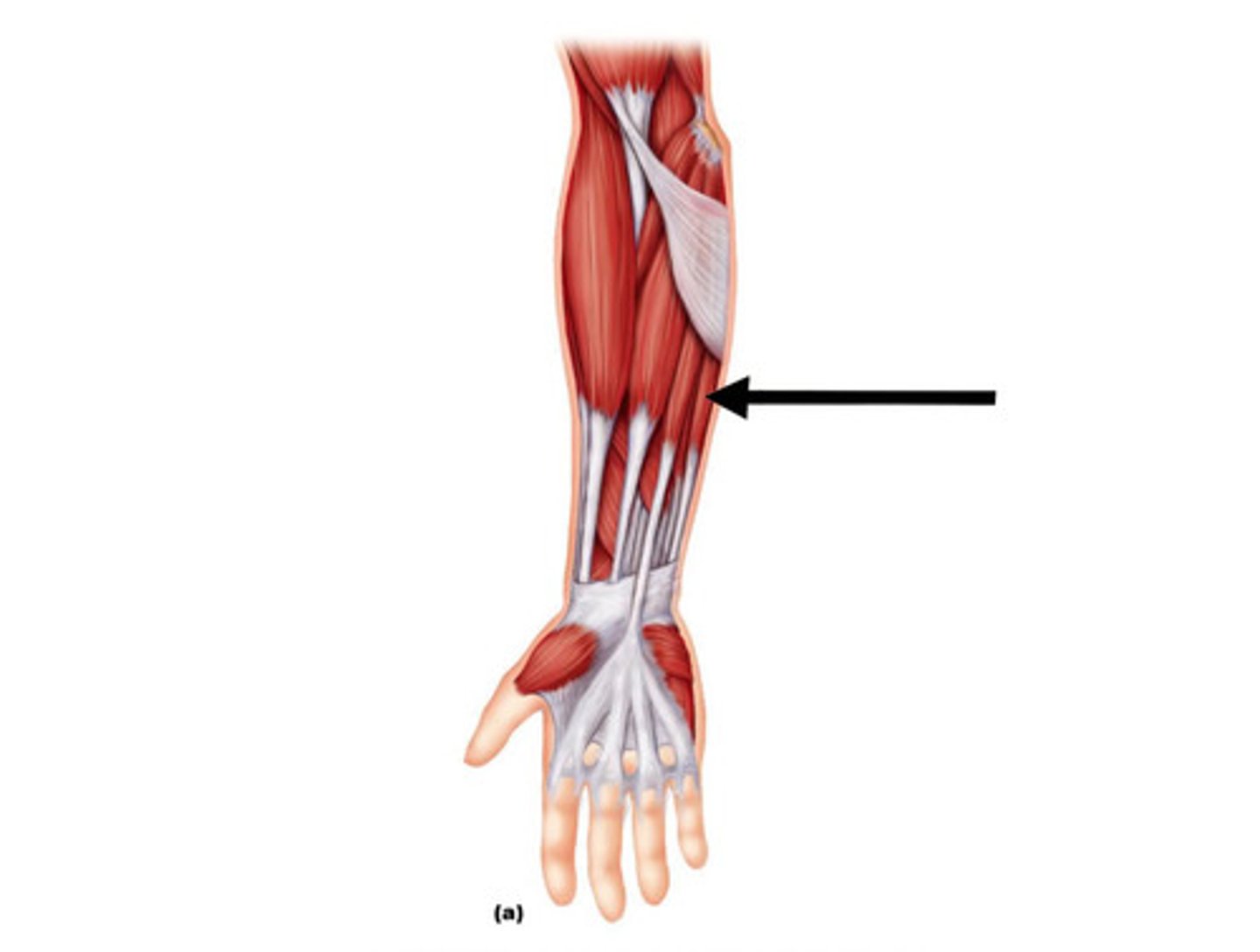
Extensor Carpi Radialis Longus
O: humerus
I: metacarpals
A: extends and abducts hand

Extensor Carpi Radialis Brevis
O: lateral epicondyle of humerus
I: metacarpals
A: extends and abducts hand

Supinator
O: lateral epicondyle of humerus
I: radius
A: supinate ("soup") forearm
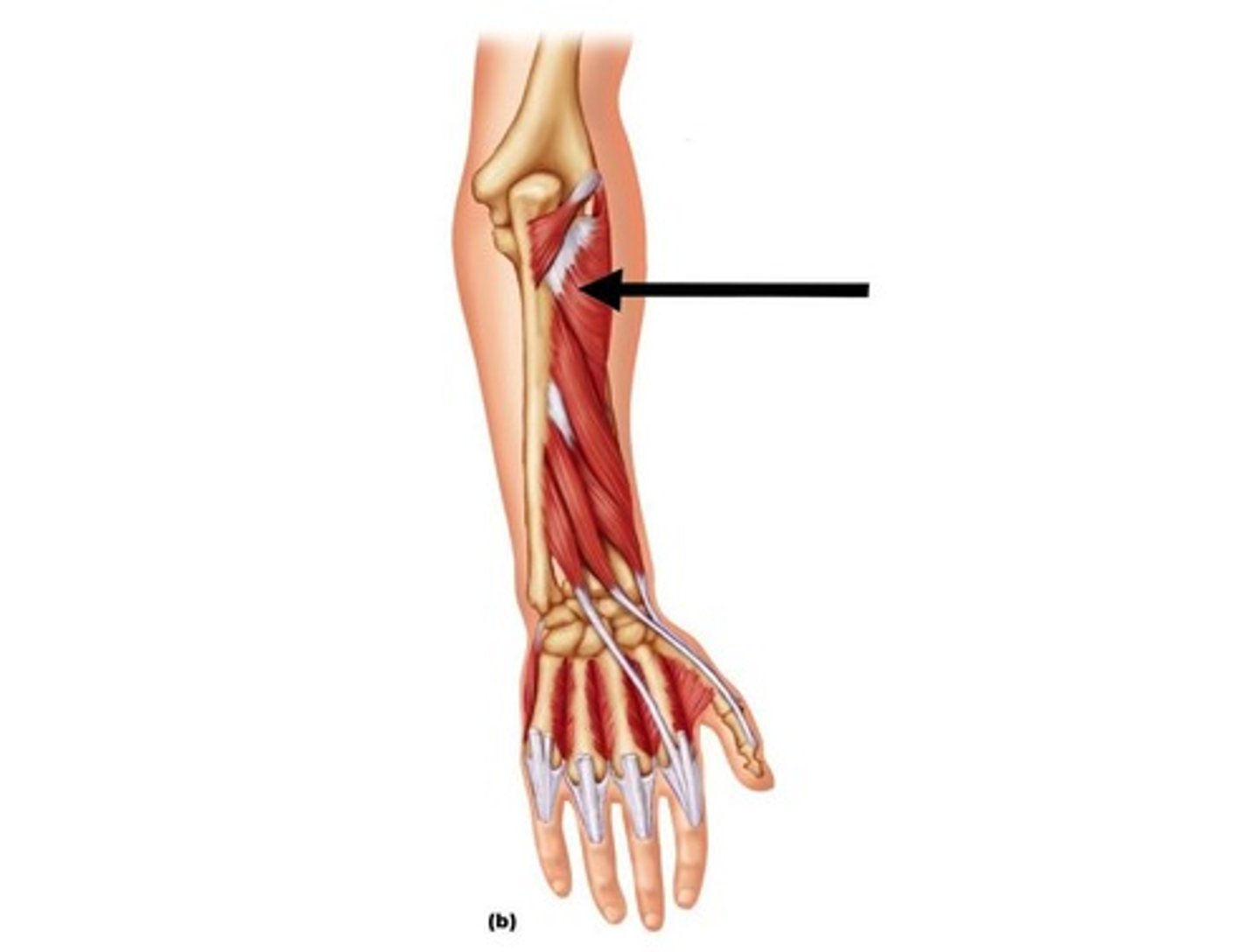
Extensor Digitorum
O: lateral epicondyle of humerus
I: phalanges
A: finger extension
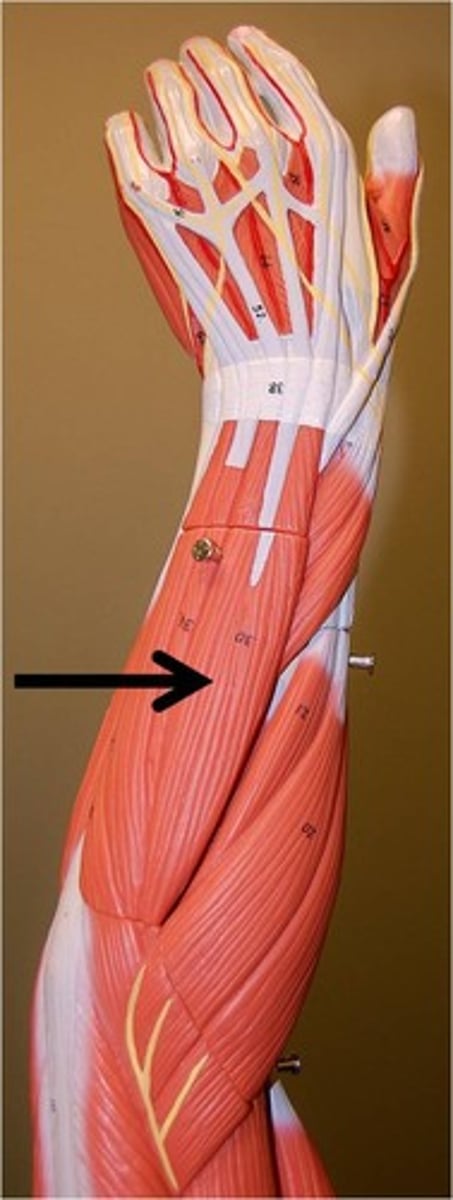
Extensor Carpi Ulnaris
O: lateral epicondyle of humerus
I: metacarpals
A: extends and adducts hand

Iliopsoas
O: ilium, sacrum
I: lesser trochanter of femur
A: flex trunk at hip joint
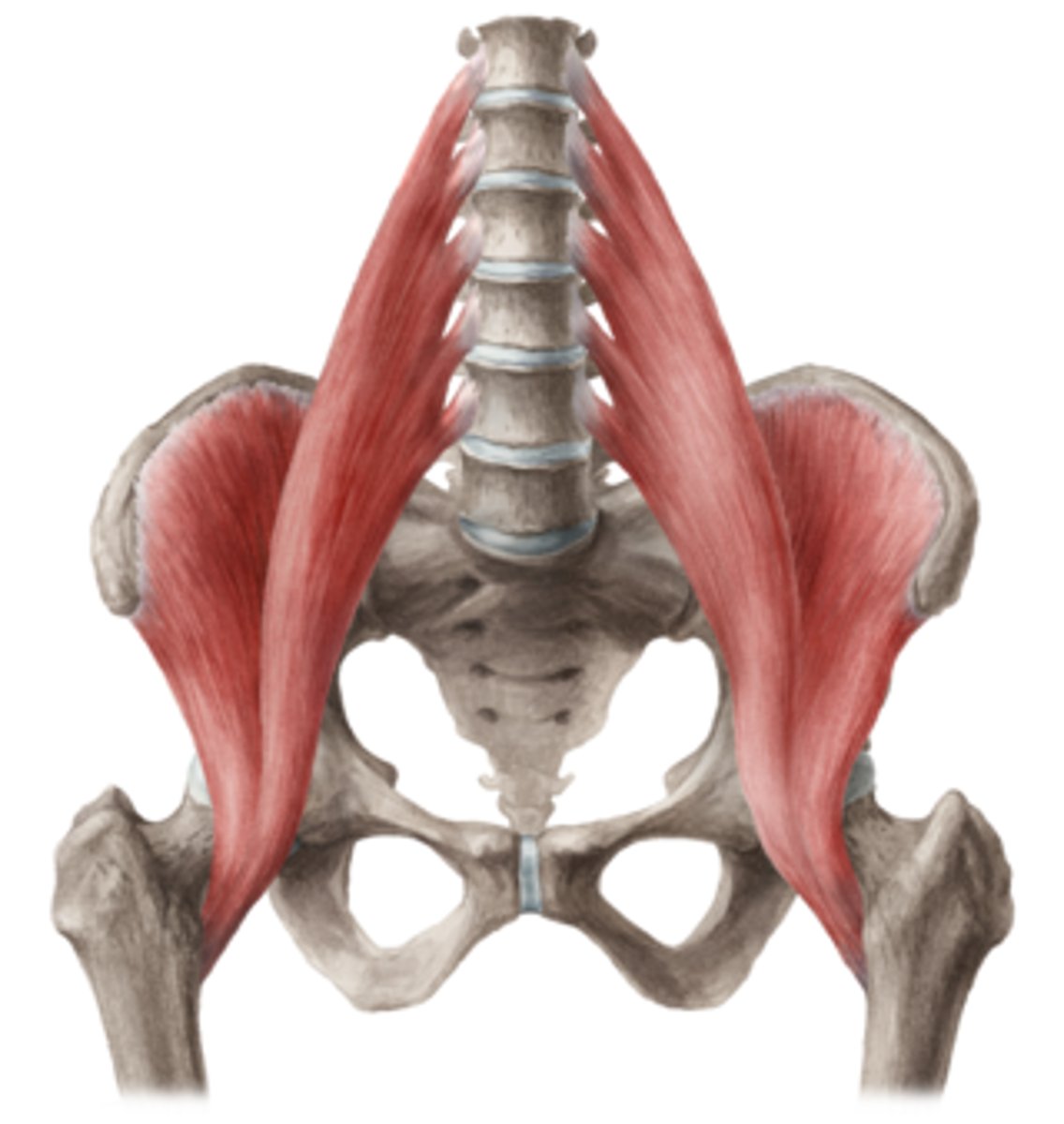
Sartorius
O: ilium
I: tibia
A: flexes thigh
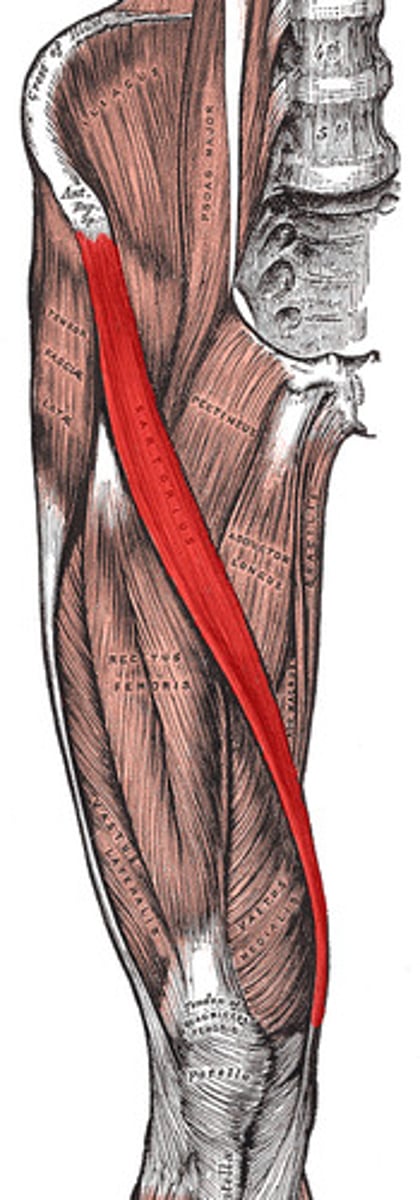
Adductor Magnus
O: ischium, pubis
I: linea aspera of femur
A: flex thigh

Adductor Longus
O: pubis
I: linea aspera of femur
A: adduct thigh

Gracilis
O: pubic bone
I: surface of tibia inferior to medial condyle
A: adducts thigh

Rectus Femoris
O: ilium/coxal bones
I: tibial tuberosity of tibia
A: flexes thigh
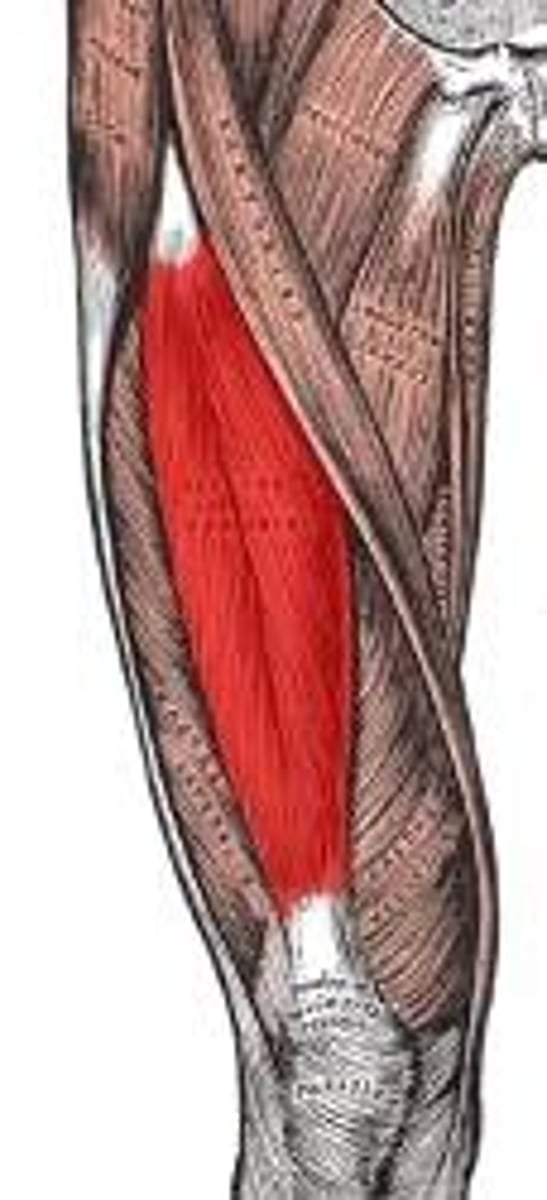
Vastus Lateralis
O: greater trochanter of femur
I: tibial tuberosity of tibia
A: extends leg
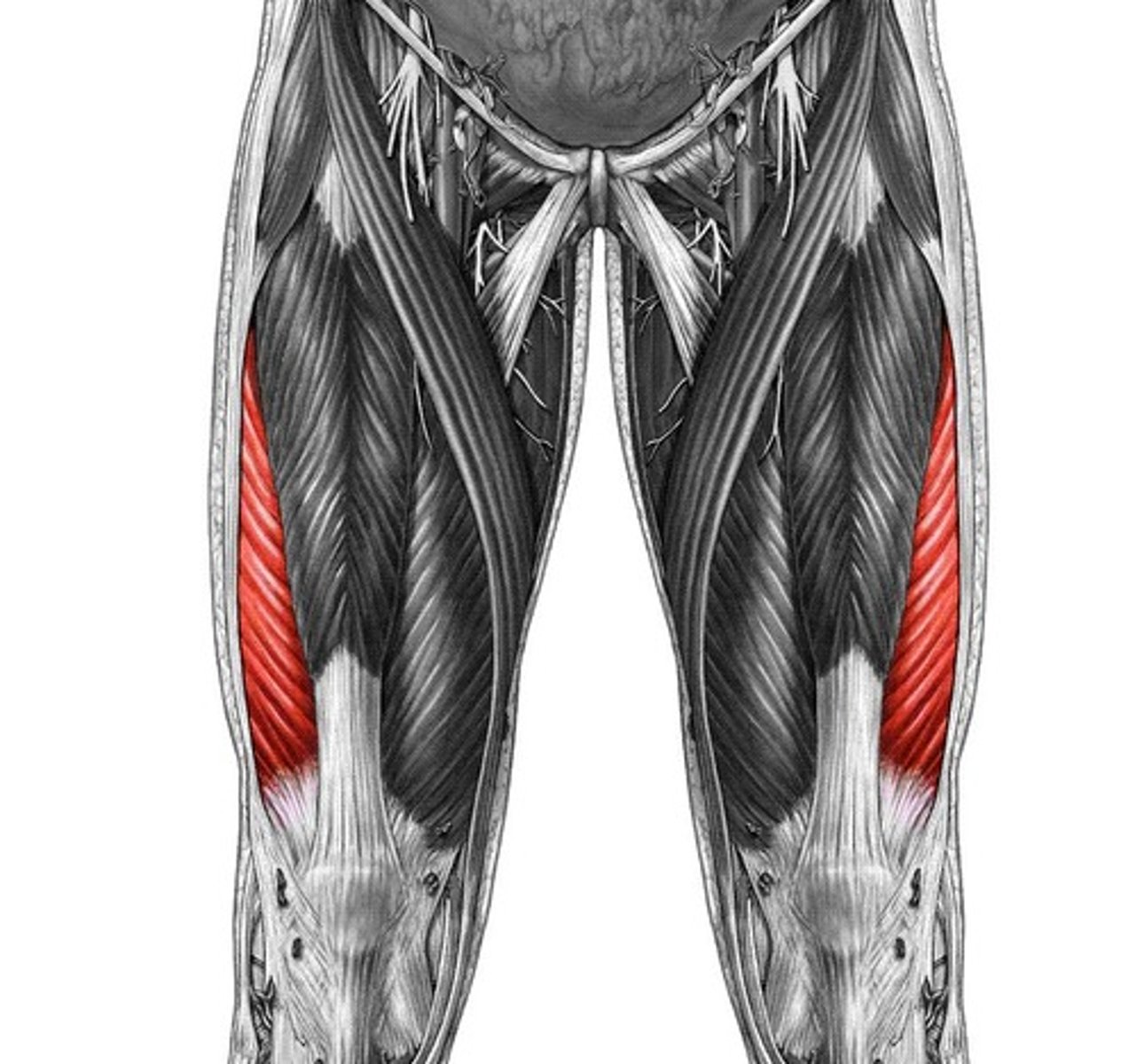
Vastus Medialis
O: linea aspera of femur
I: tibial tuberosity of tibia
A: extends leg
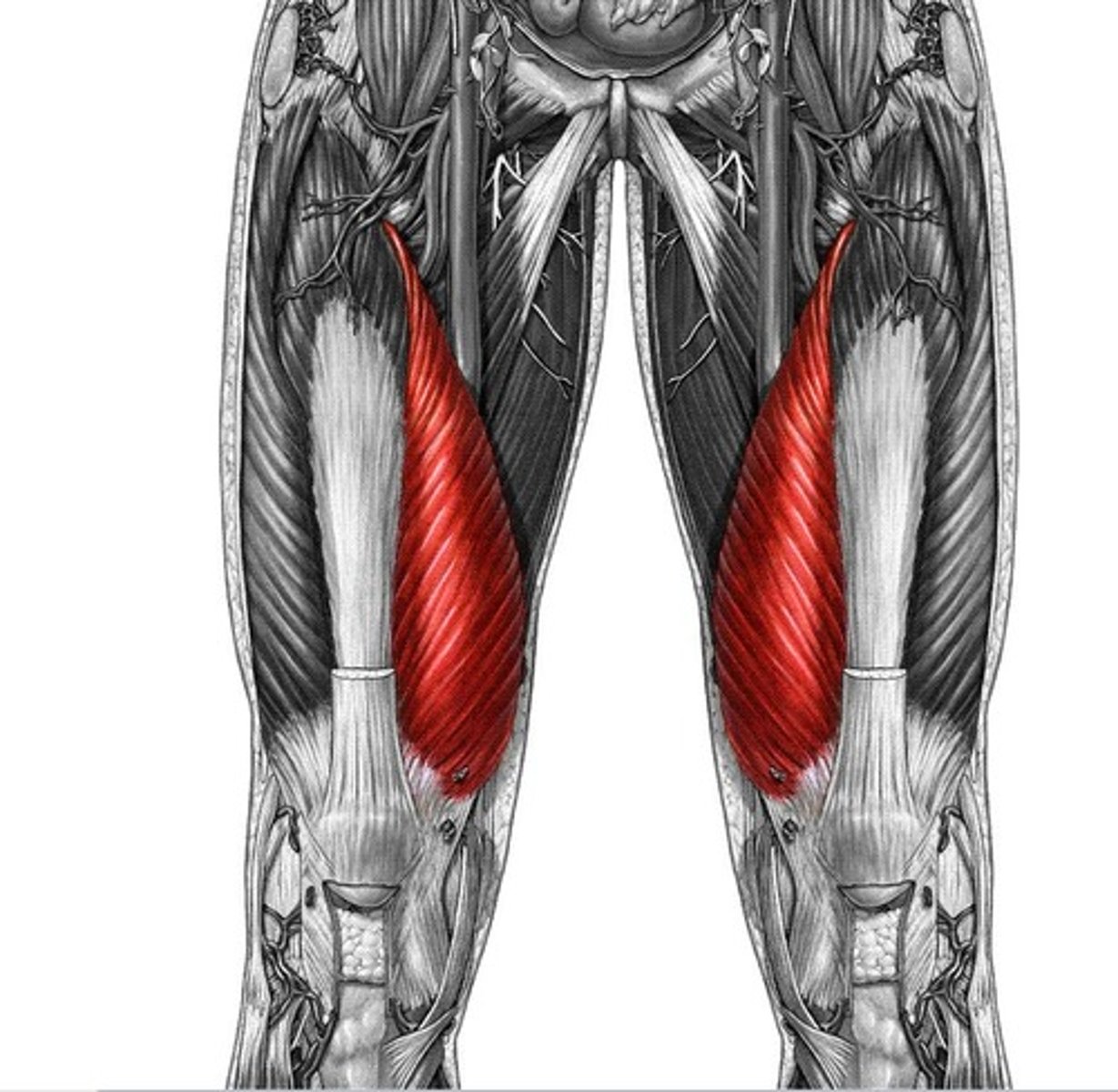
Vastus Intermedius
O: femur
I: tibial tuberosity of tibia
A: extends leg

Tensor Fasciae Latae
O: ilium
I: iliotibial tract (ends at lateral epicondyle of humerus)
A: steadies trunk
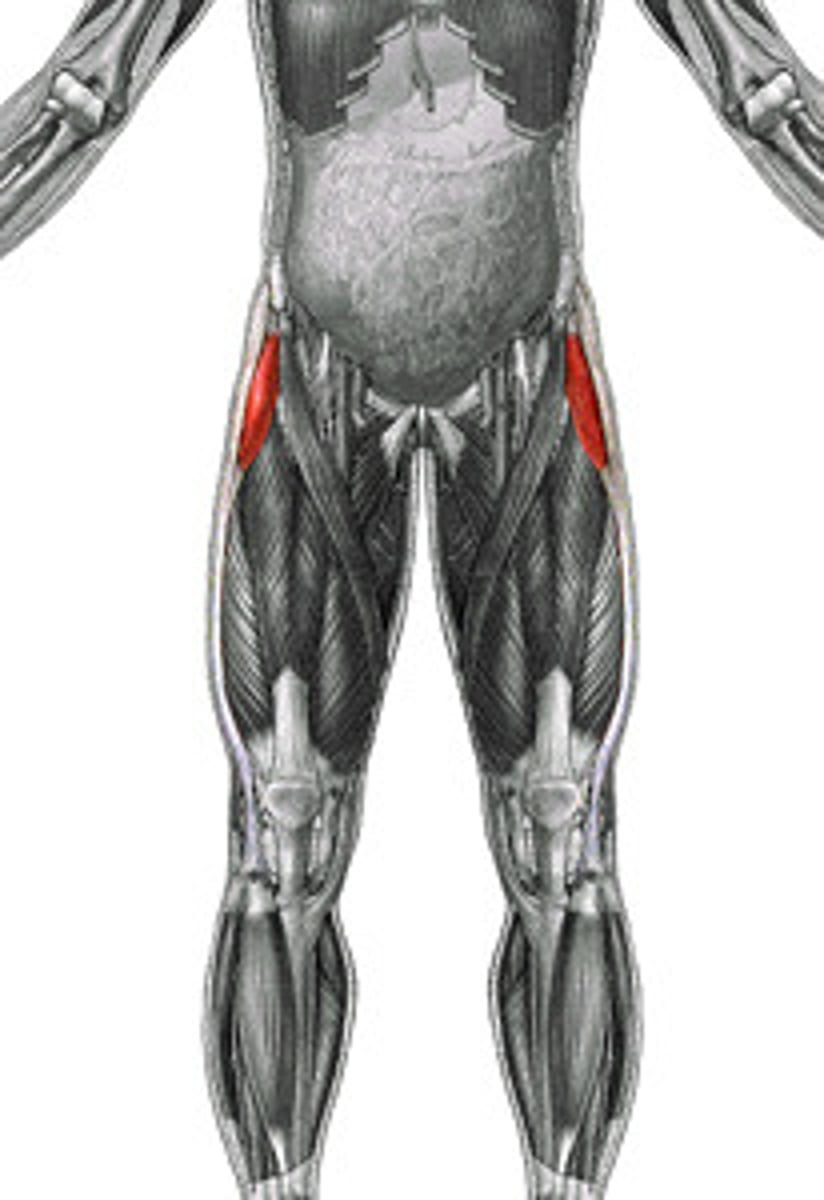
Biceps Femoris
O: linea aspera of femur
I: lateral condyle of tibia
A: extends thigh
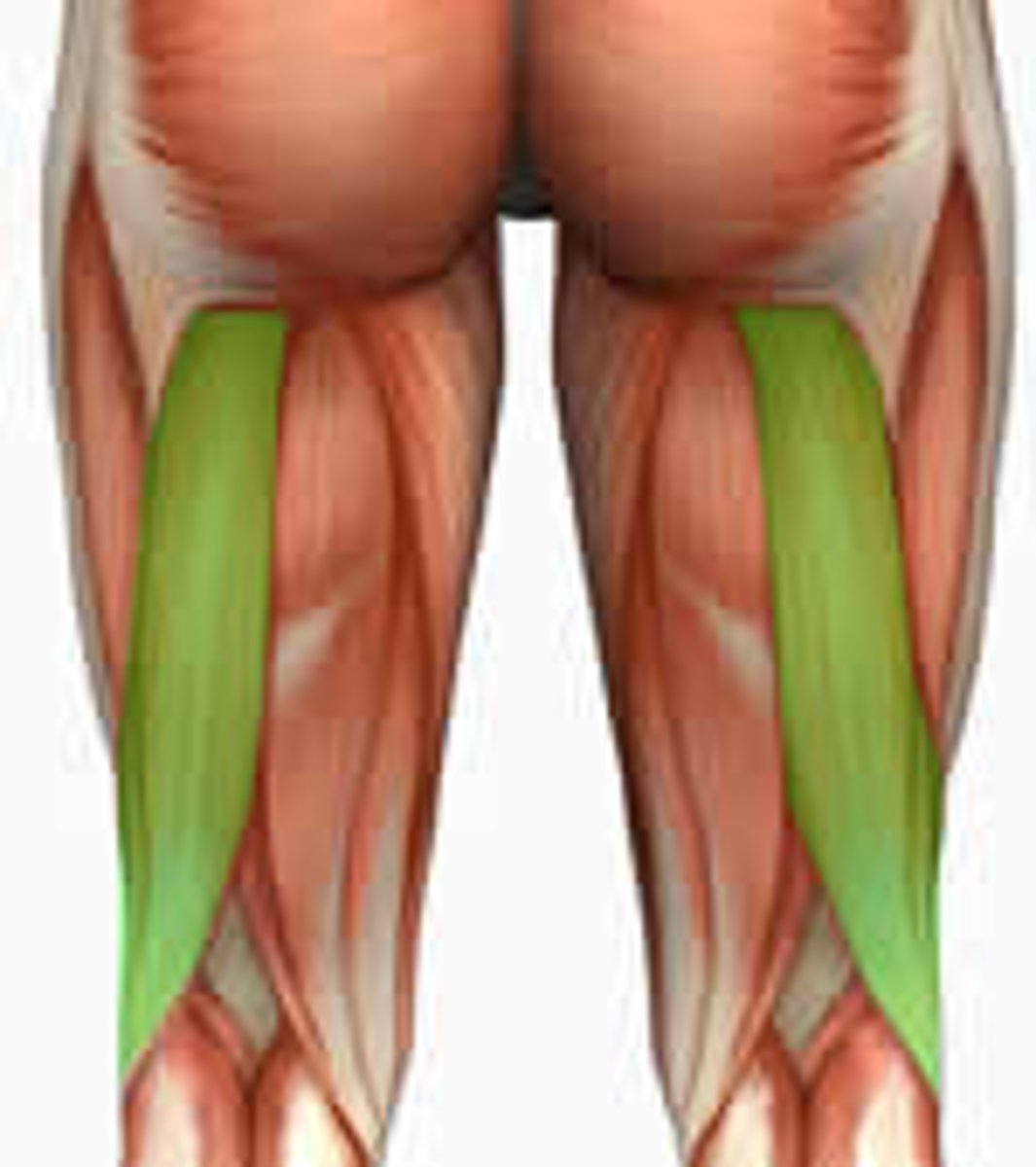
Semitendinosus
O: ischium
I: tibia
A: extends thigh
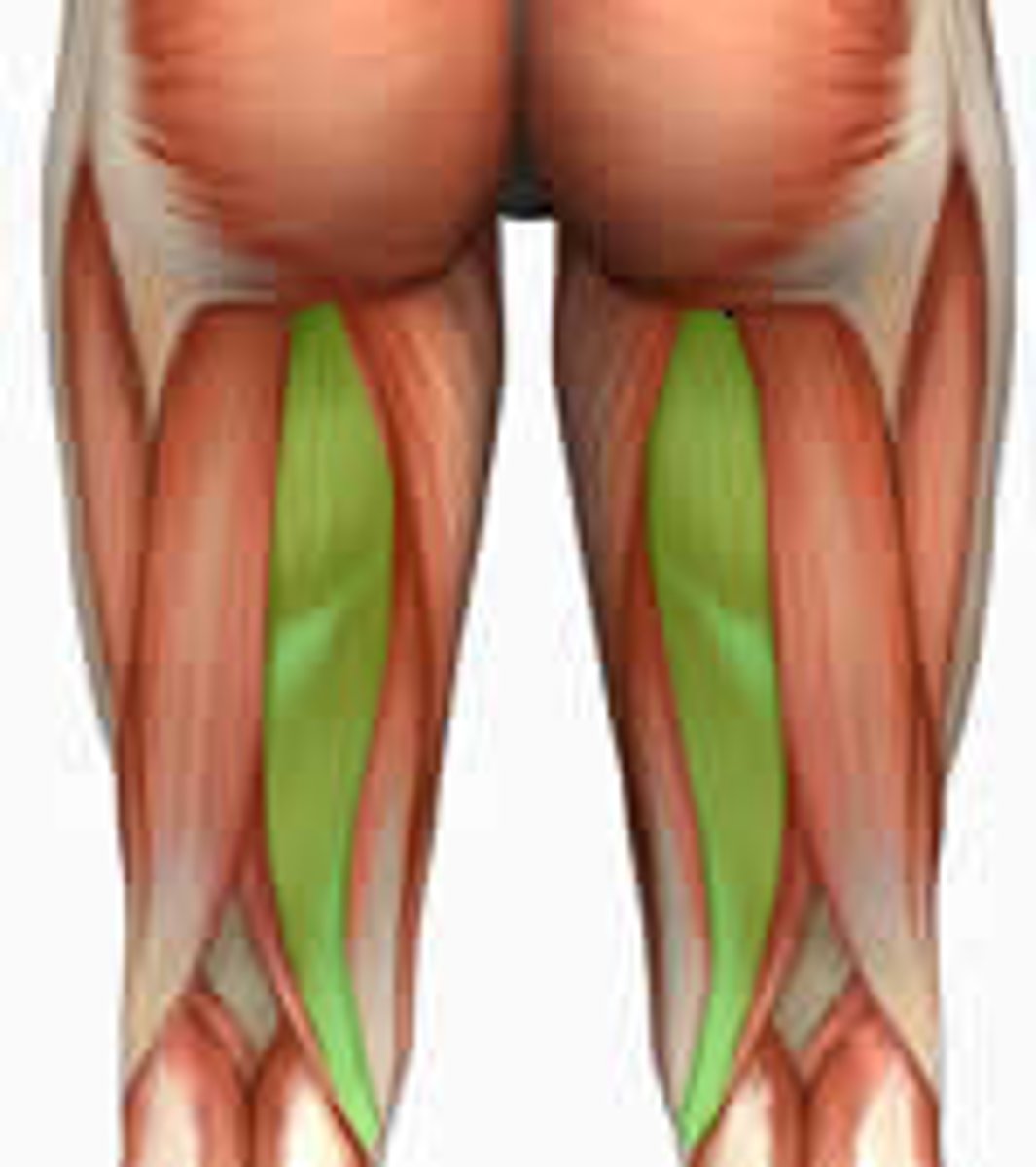
Semimembranosus
O: ischium
I: medial condyle of tibia
A: extends thigh

Gluteus Maximus
O: ilium
I: femur
A: powerful thigh extensor
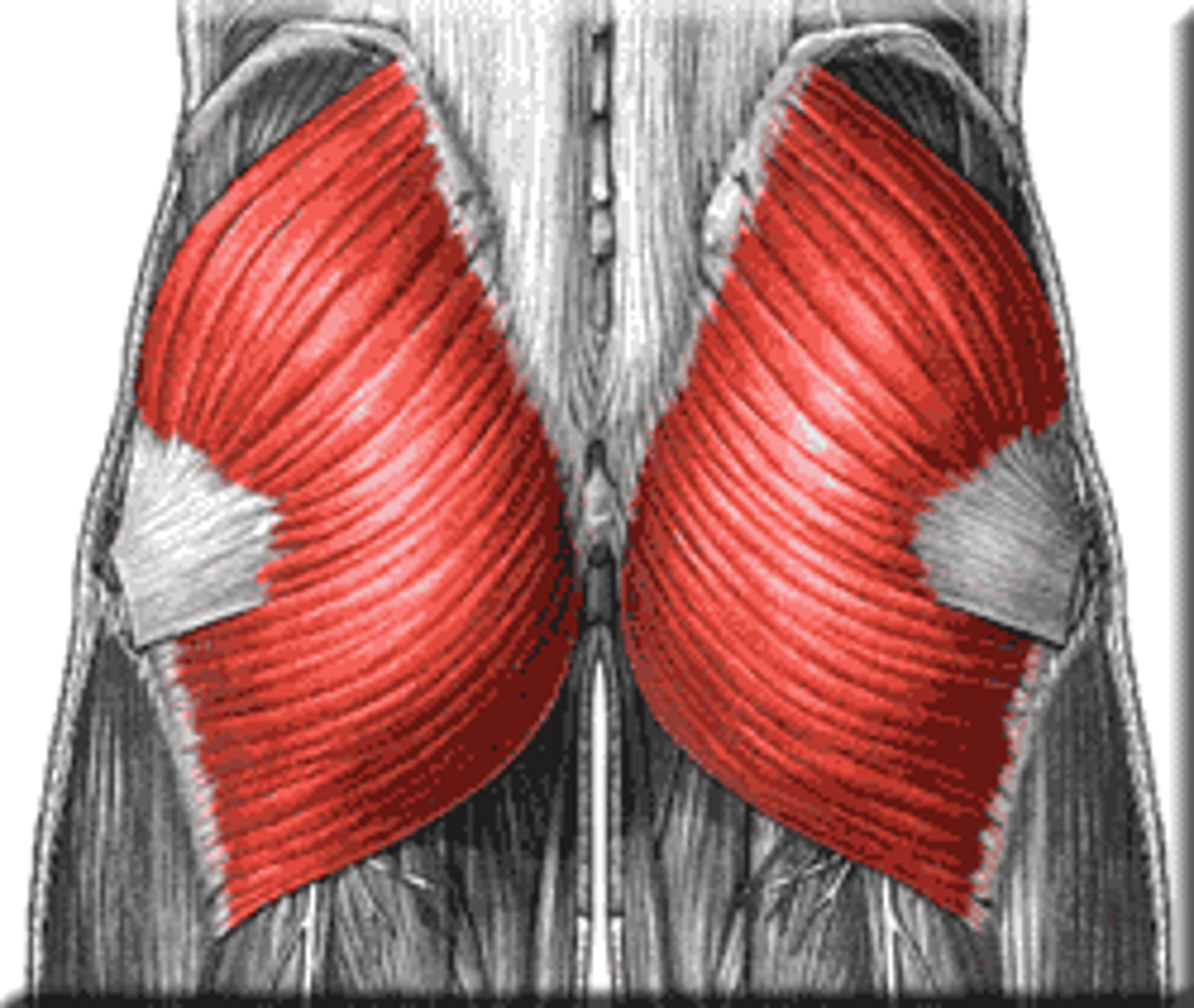
Gluteus Medius
O: ilium
I: greater trochanter of femur
A: abducts thigh
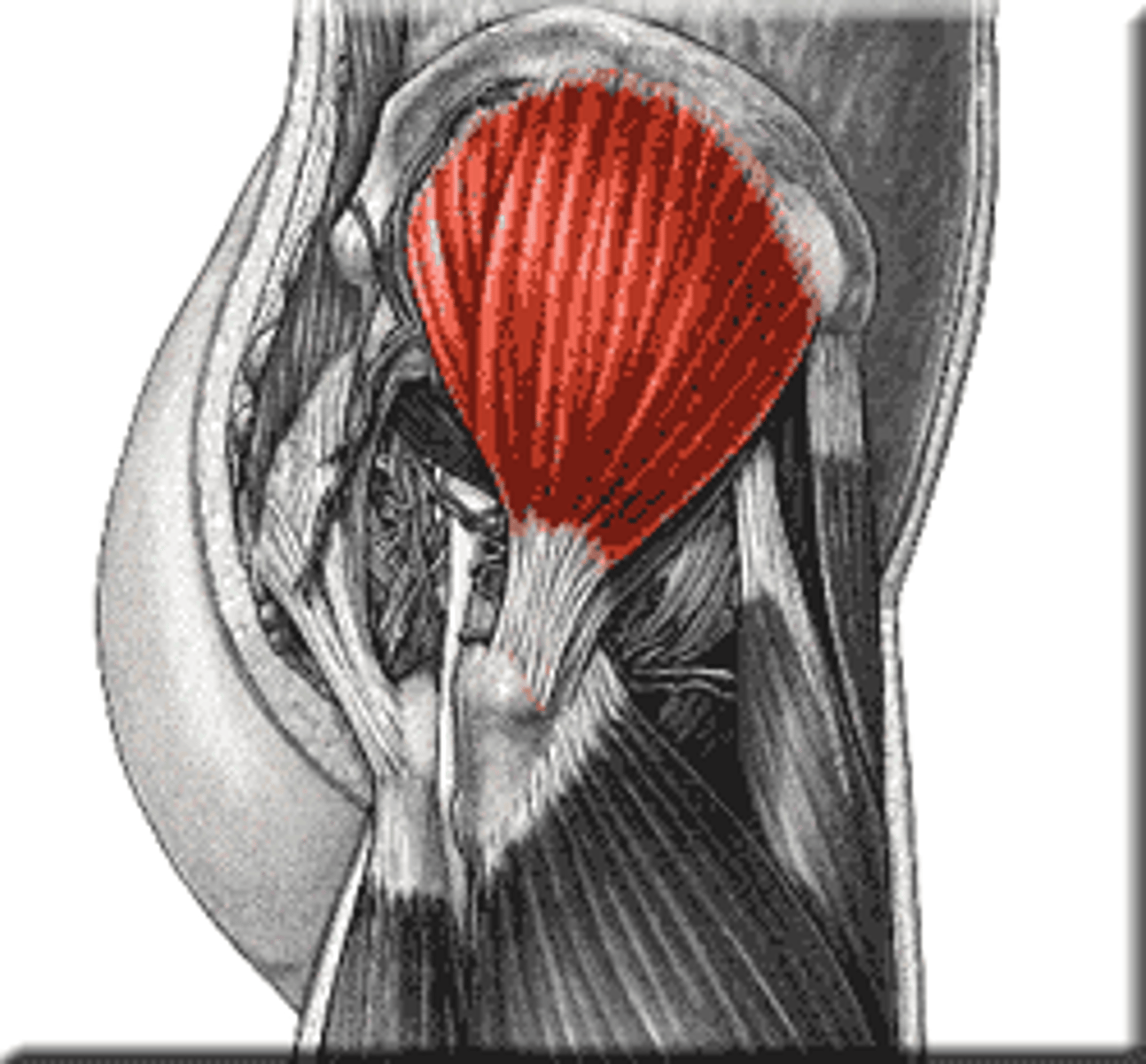
Tibialis Anterior
O: lateral condyle of tibia
I: tarsals and metatarsals
A: dorsiflexion

Extensor Digitorum Longus
O: lateral condyle of tibia
I: phalanges of foot
A: prime mover of toe extension
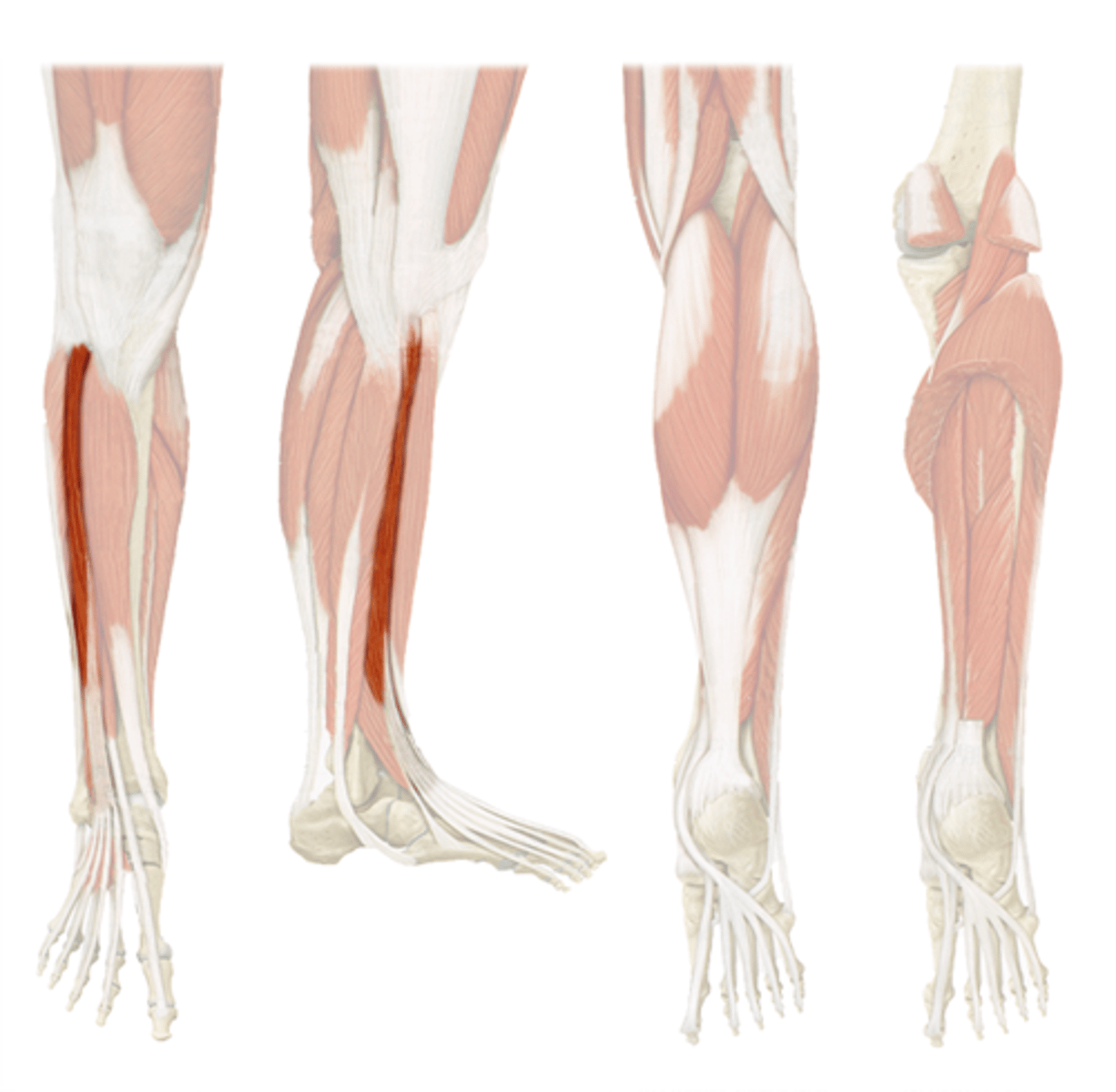
Gastrocnemius
O: medial & lateral condyles of femur
I: calcaneus
A: plantar flexes foot
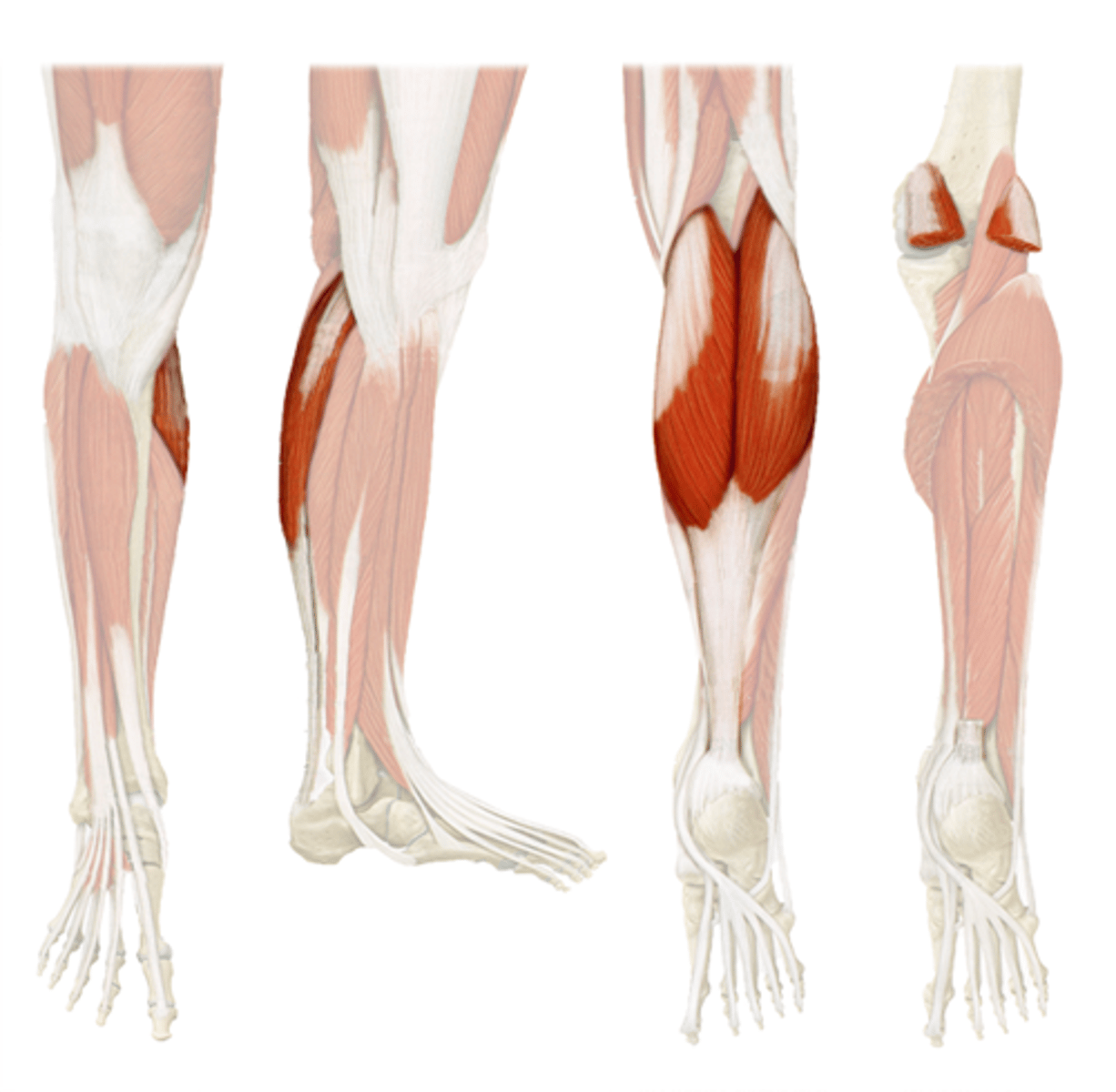
Soleus
O: tibia
I: calcaneus via calcaneal tendon (achilles tendon!)
A: plantar flexion
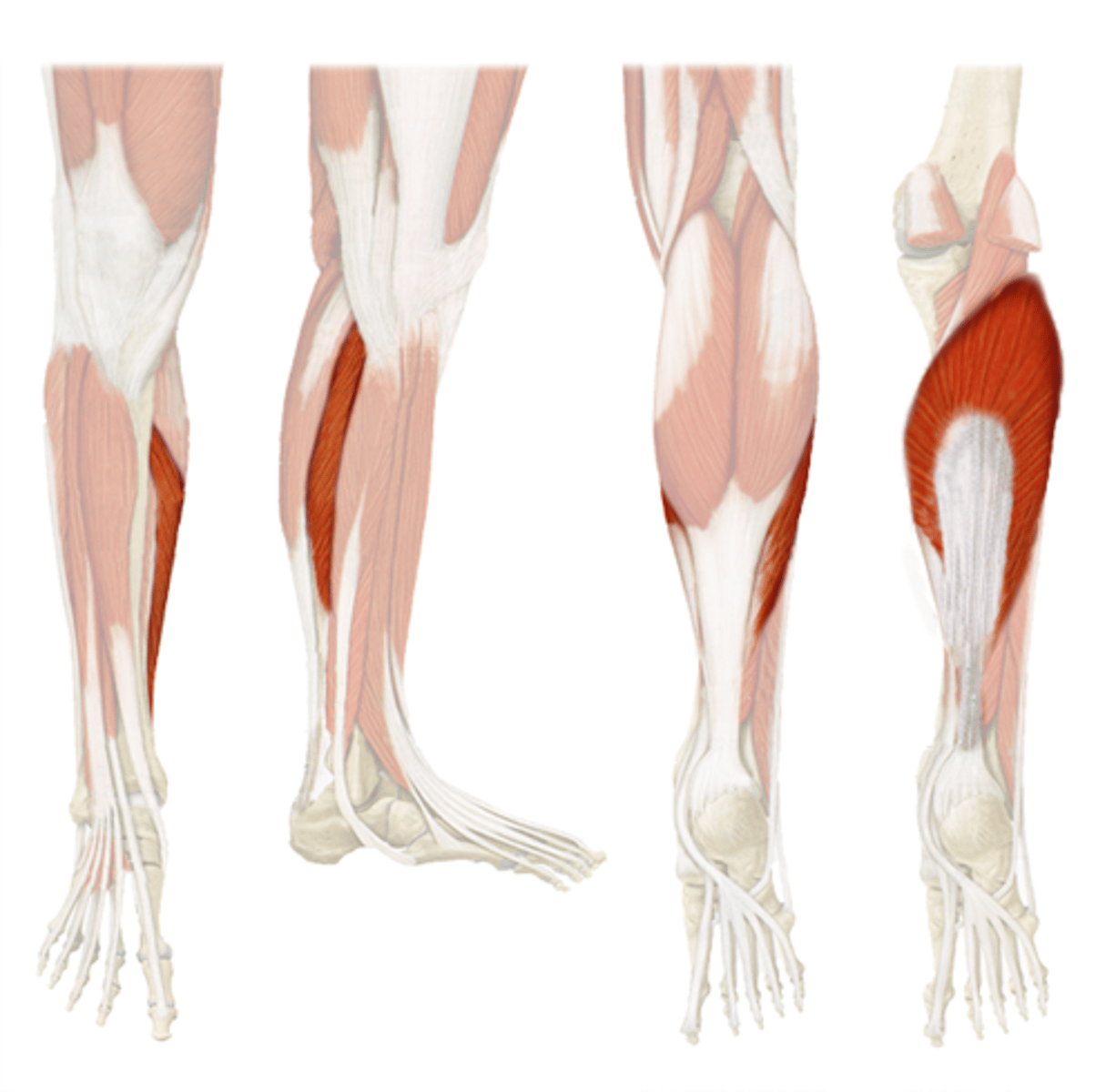
Popliteus
O: lateral condyle of femur
I: tibia
A: flexes & rotates leg medially to unlock knee when leg flexion occurs
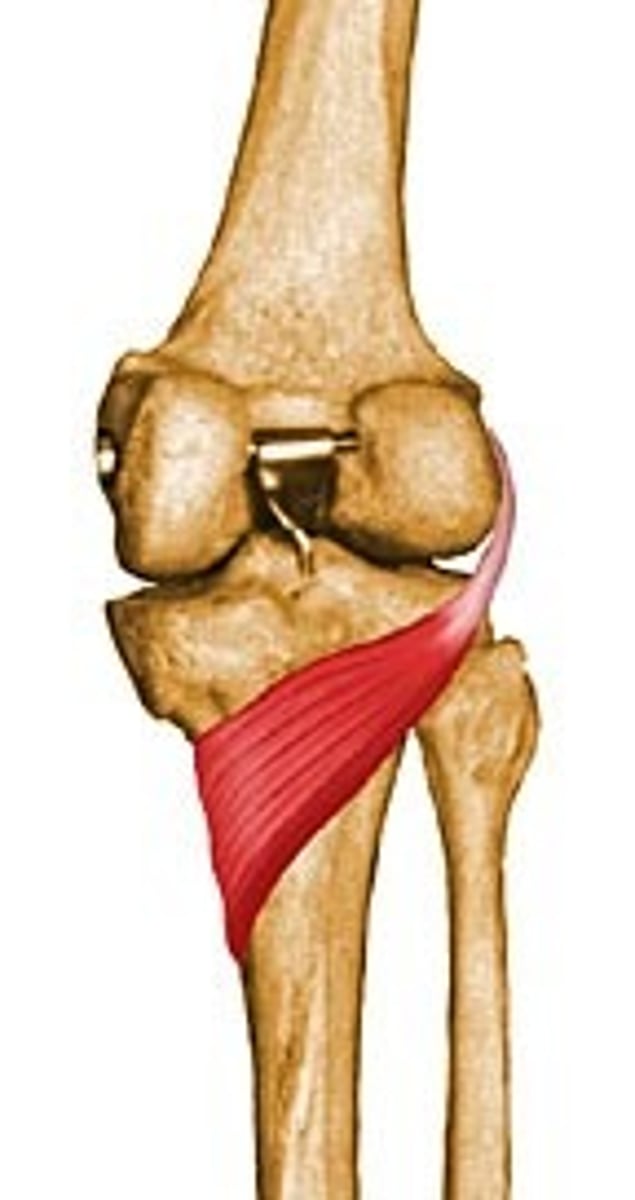
Tibialis Posterior
O: tibia
I: tarsals
A: prime mover of foot inversion

Flexor Digitorum Longus
O: tibia
I: phalanges of foot
A: flexes toes
